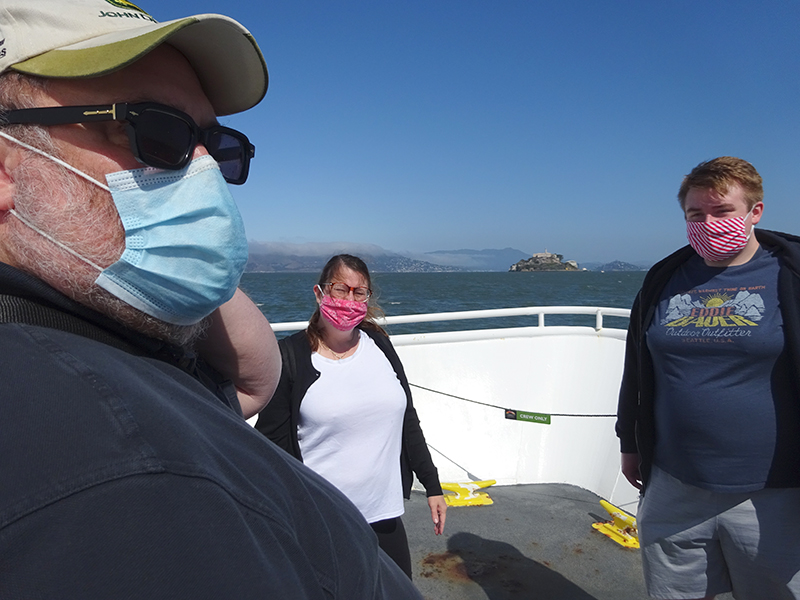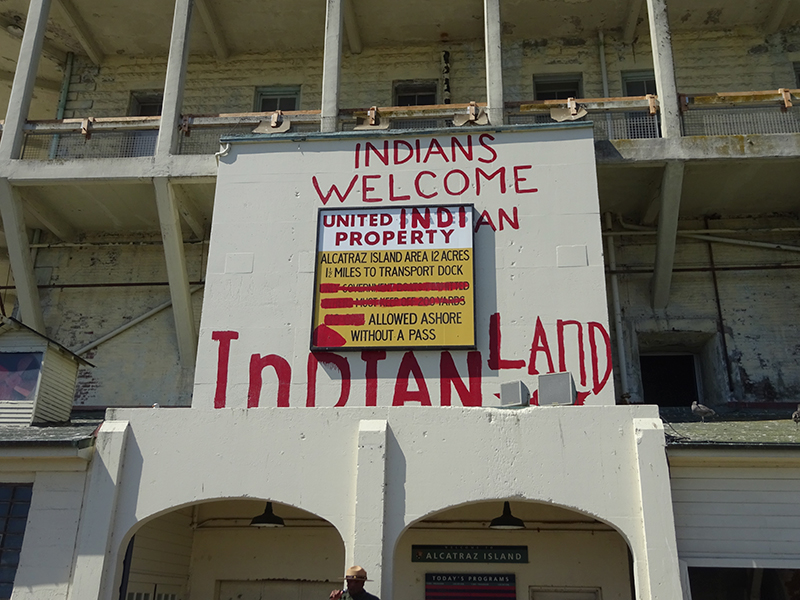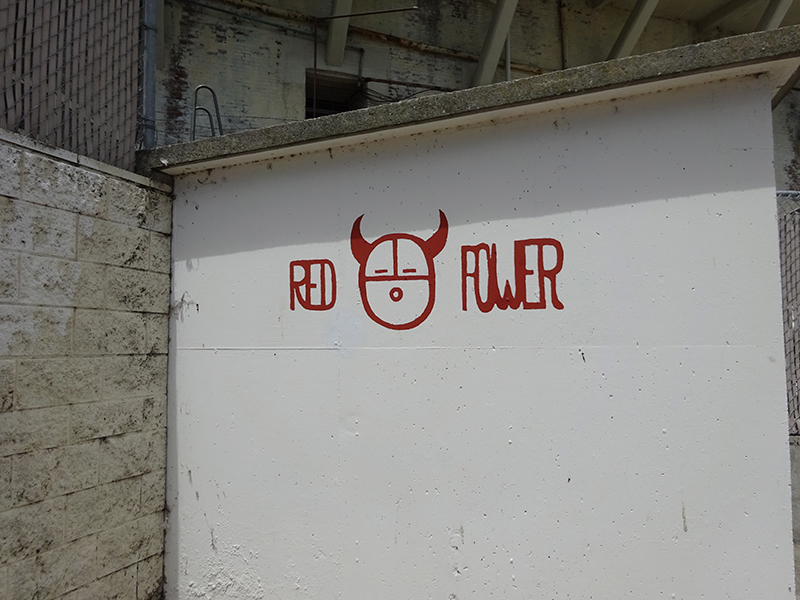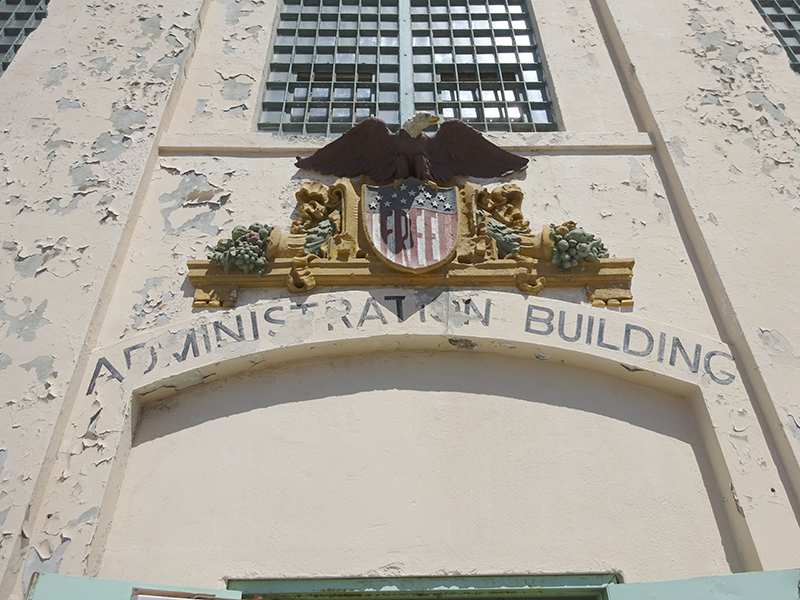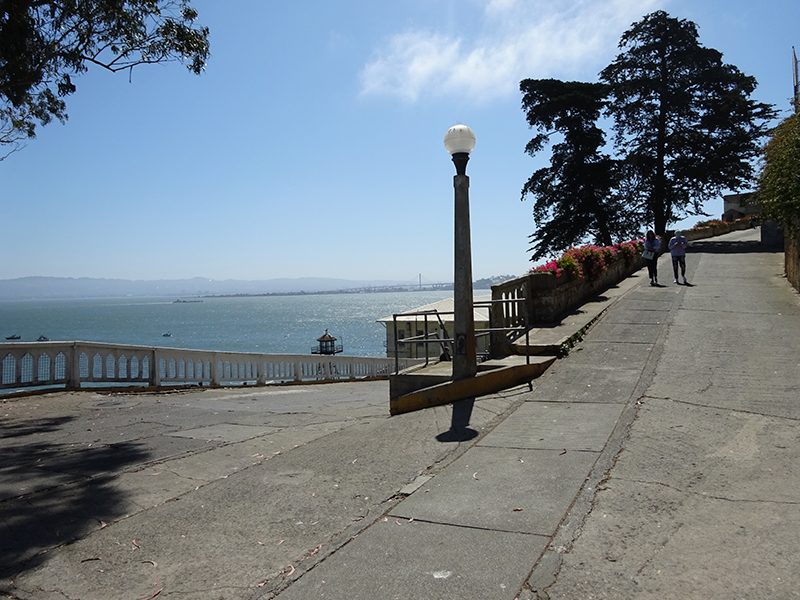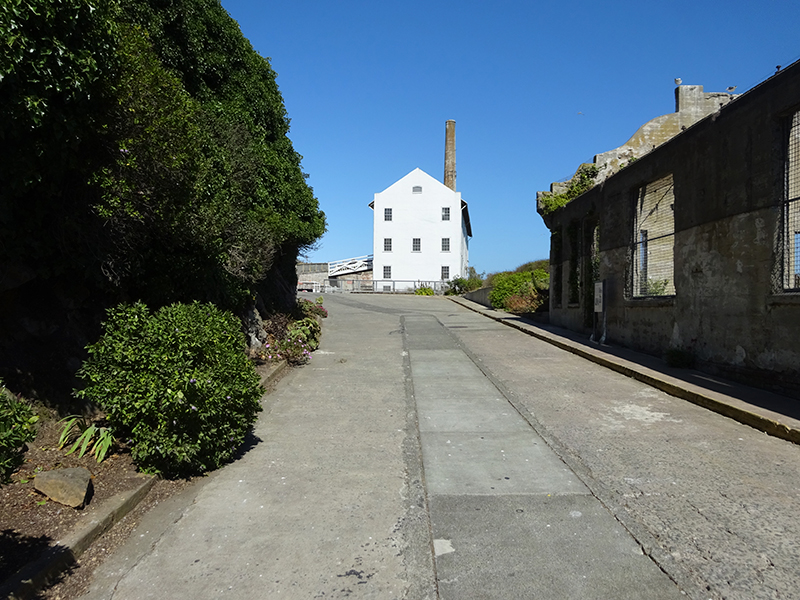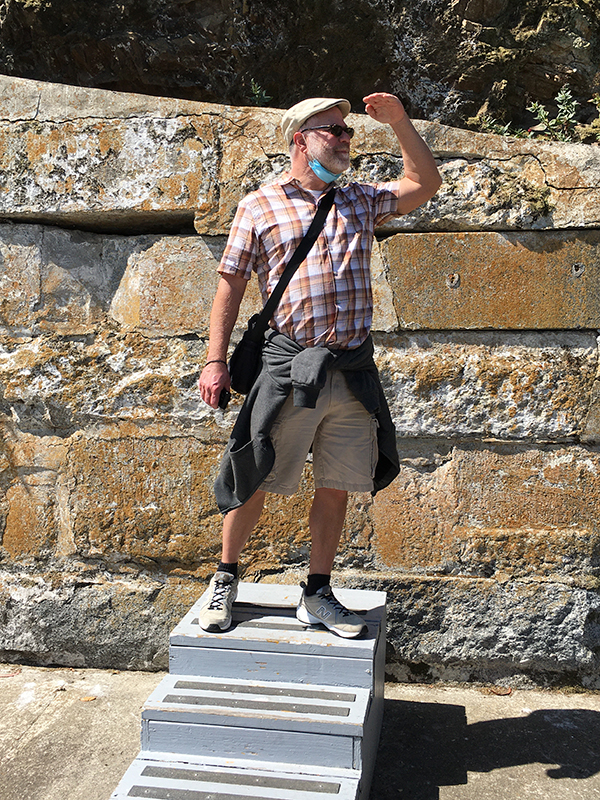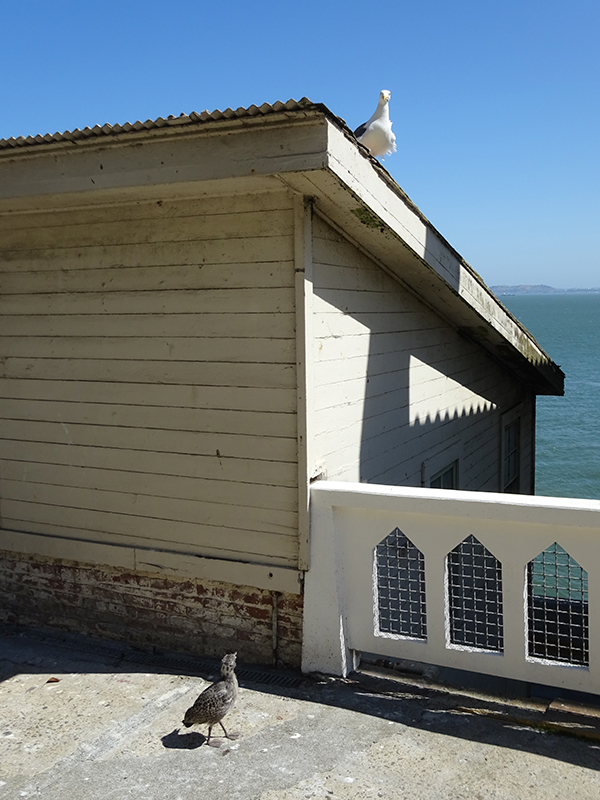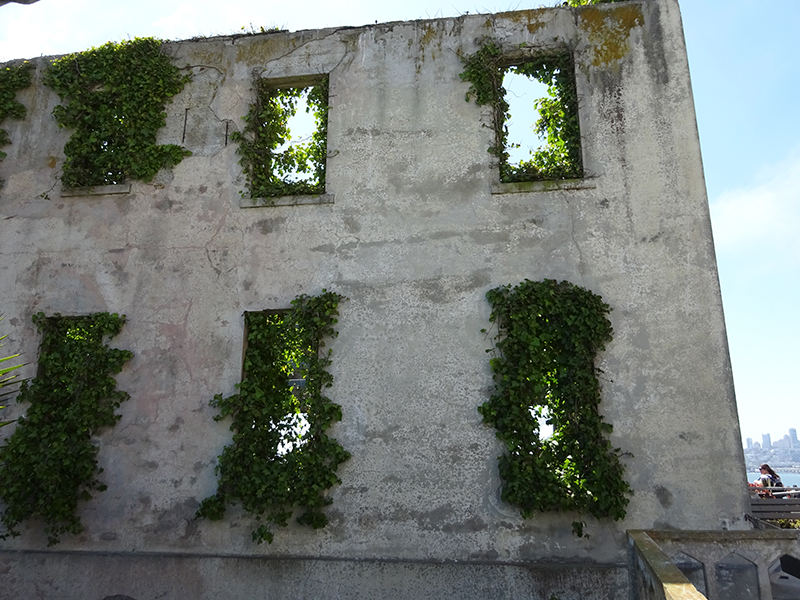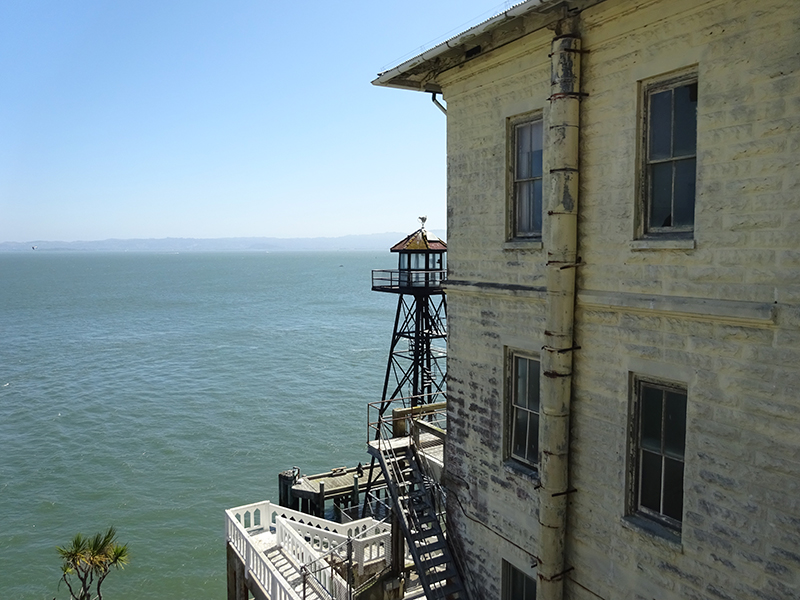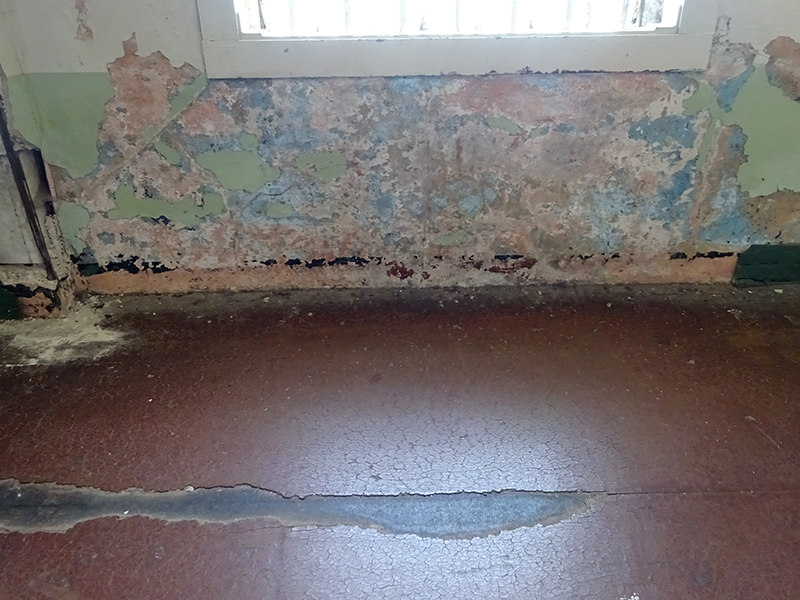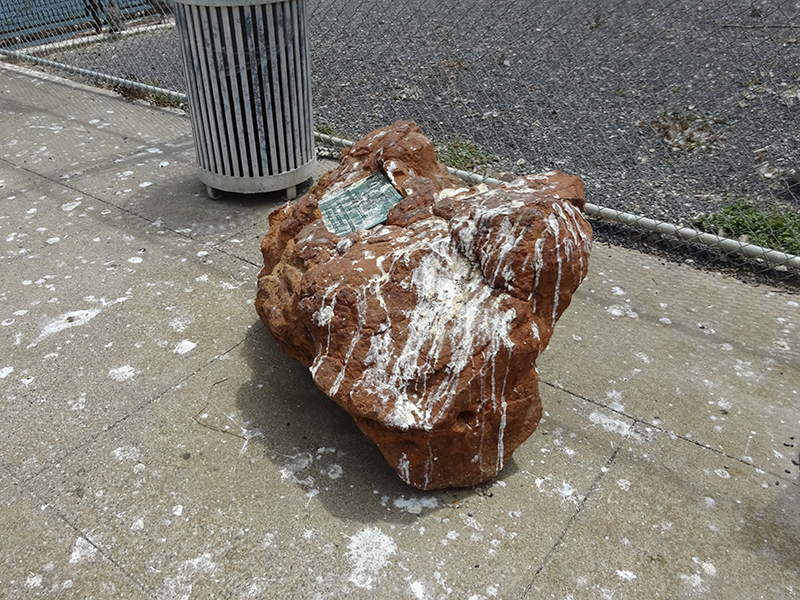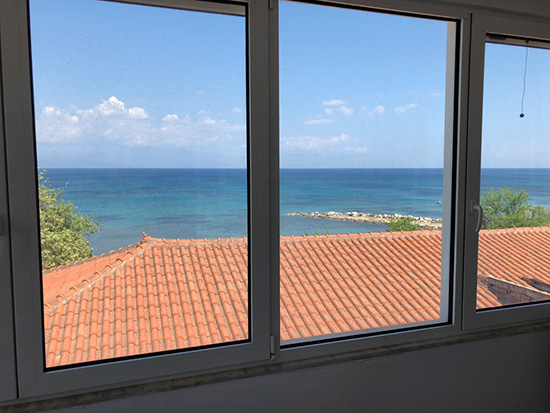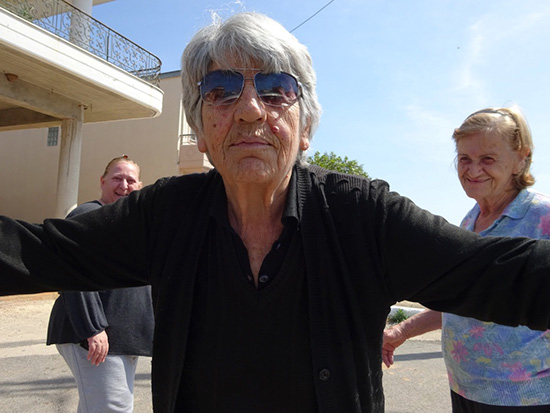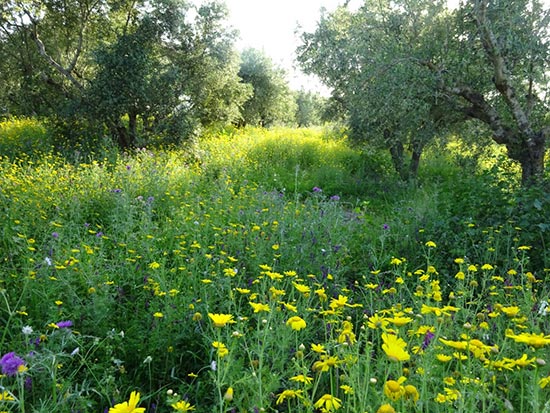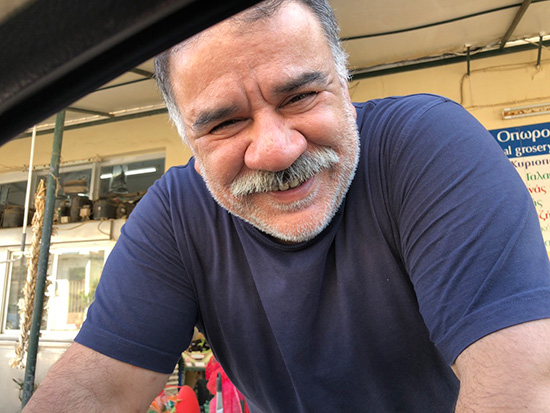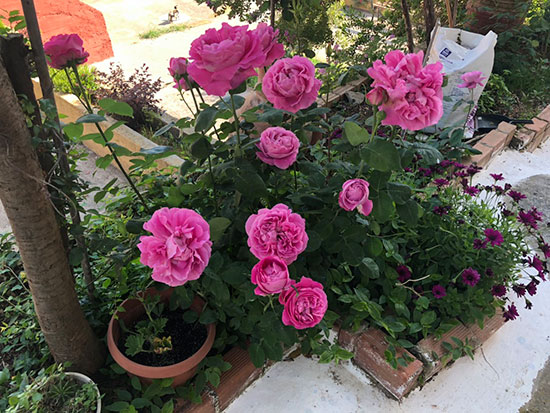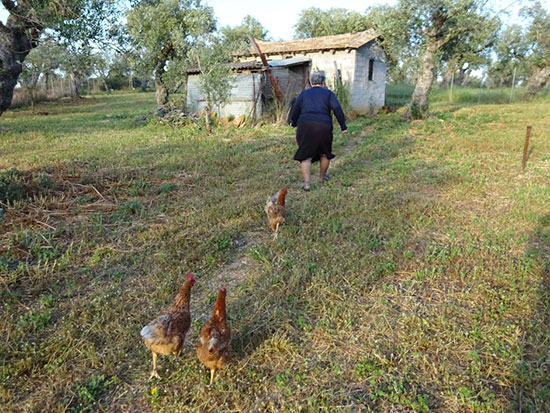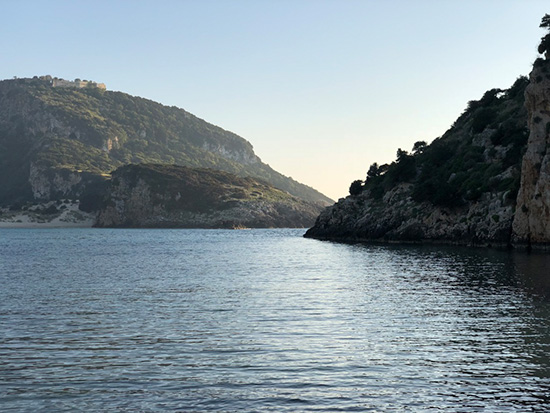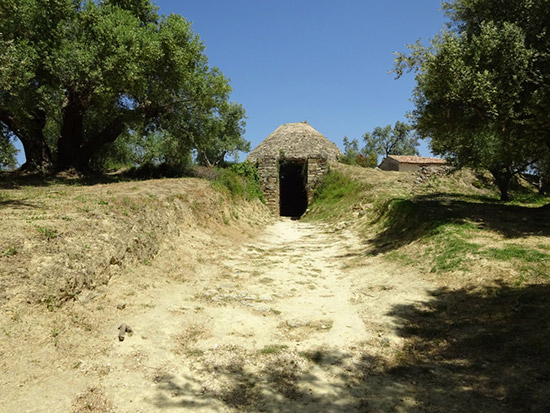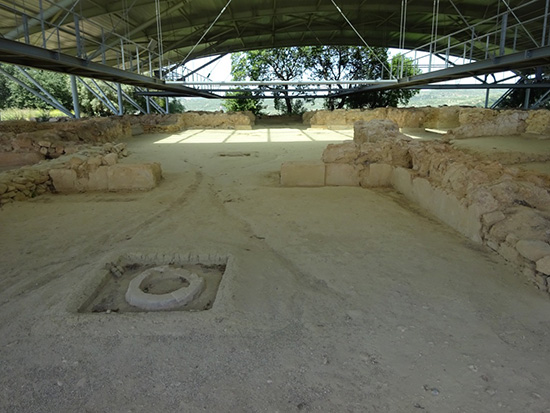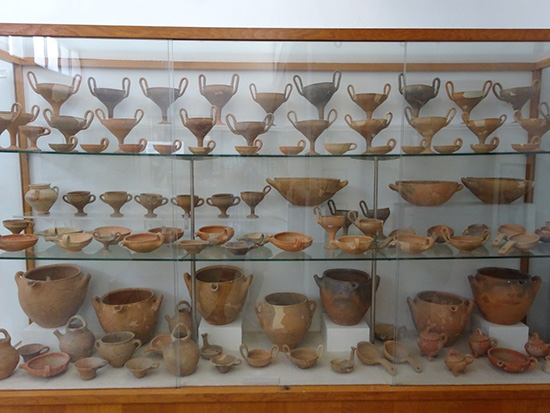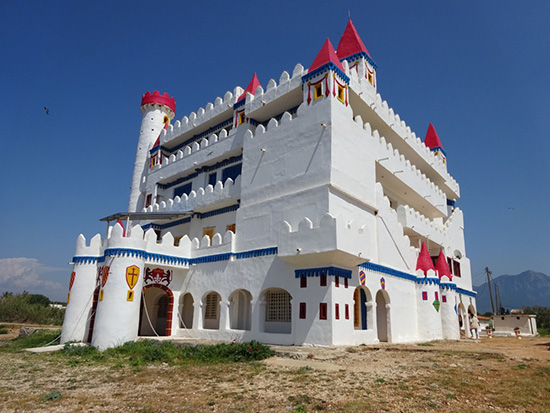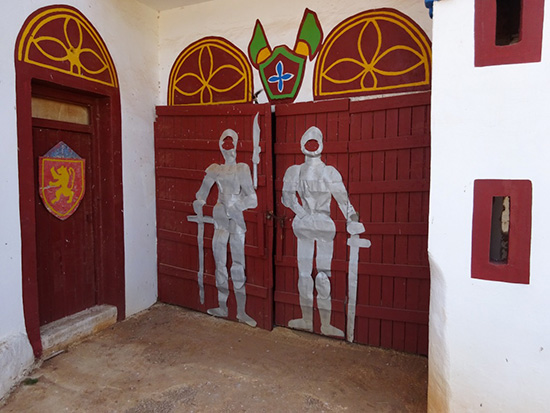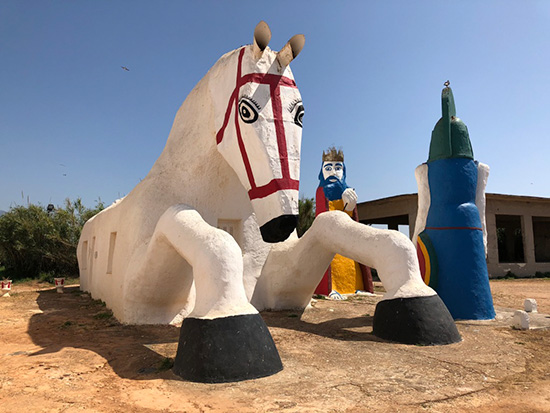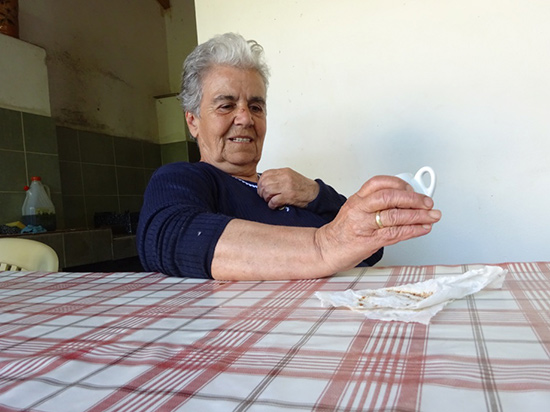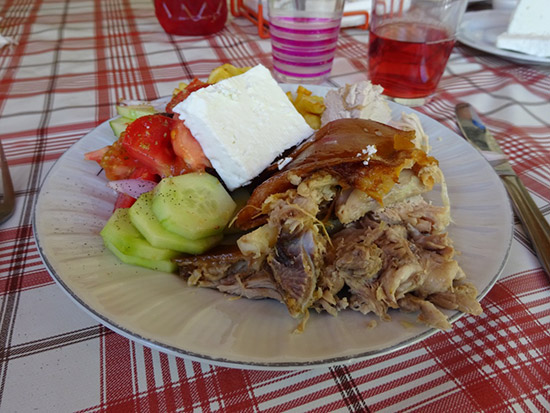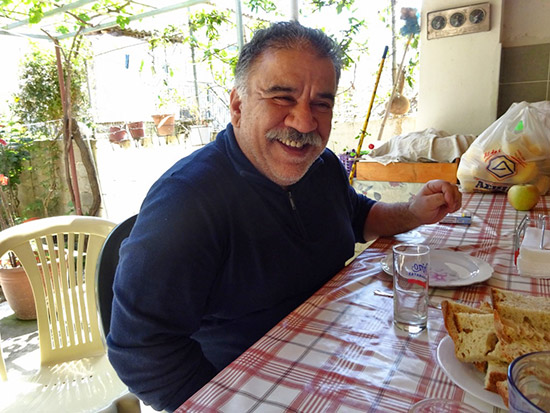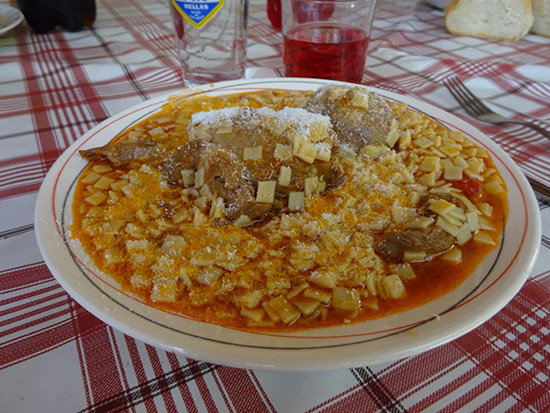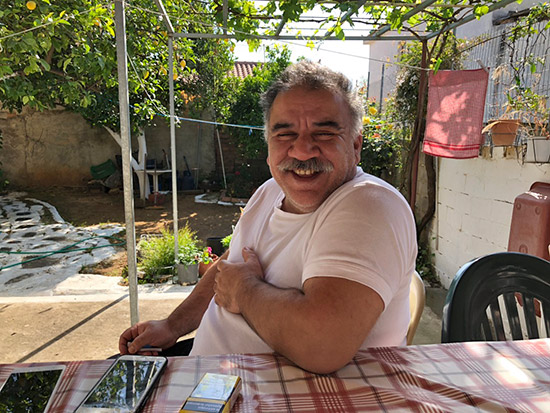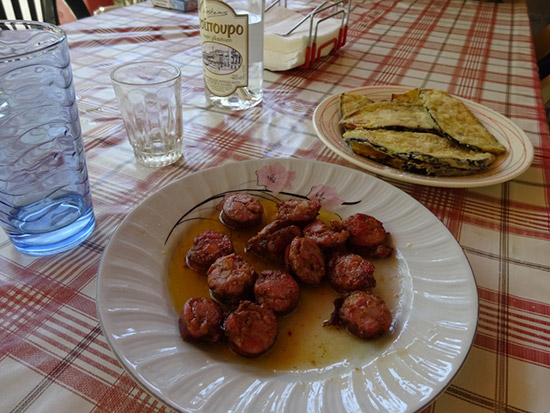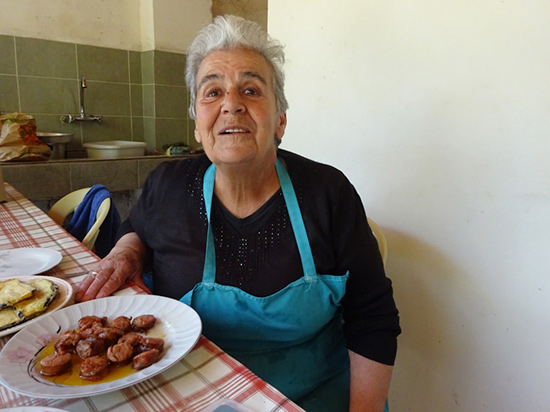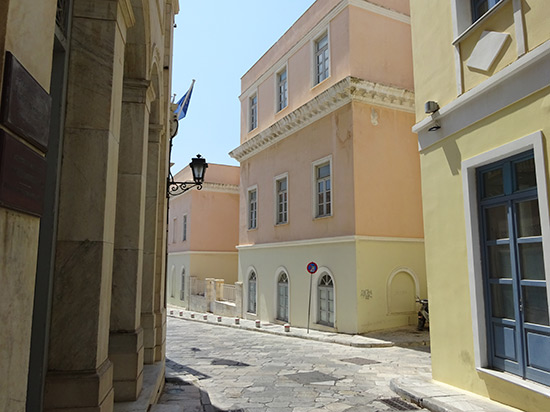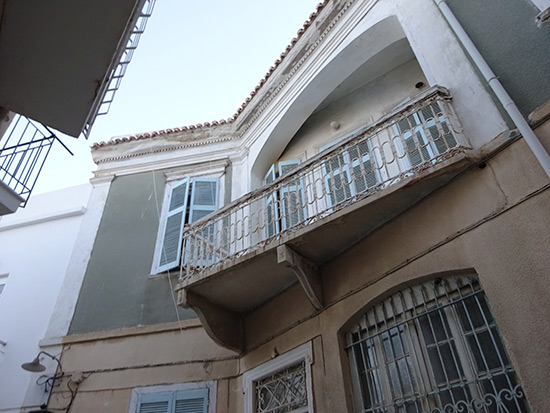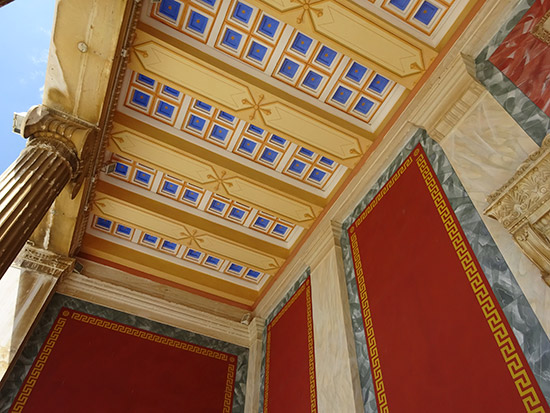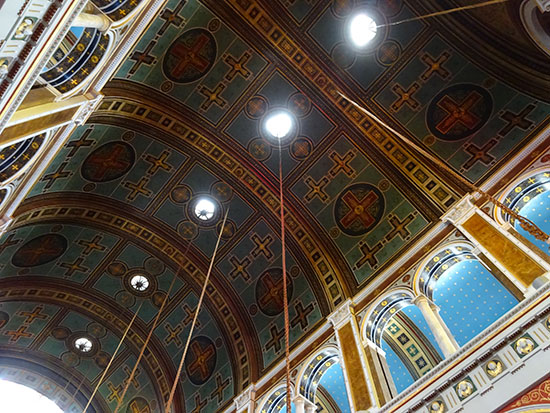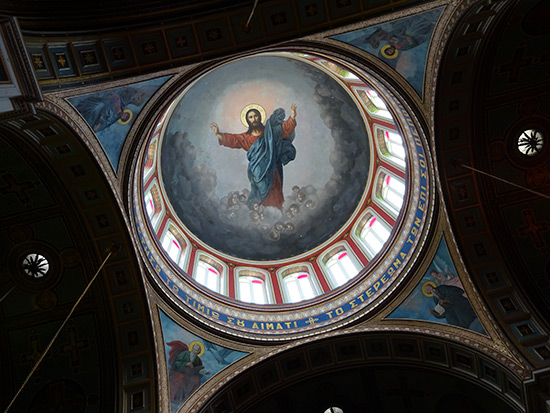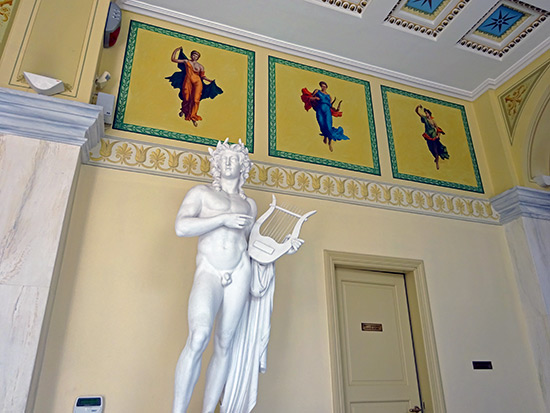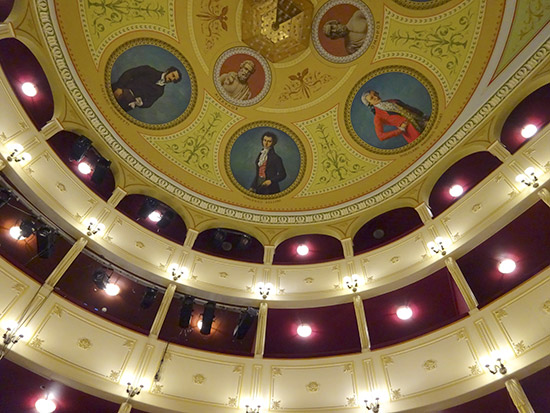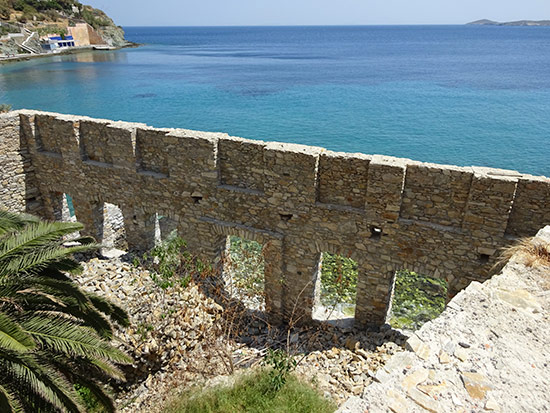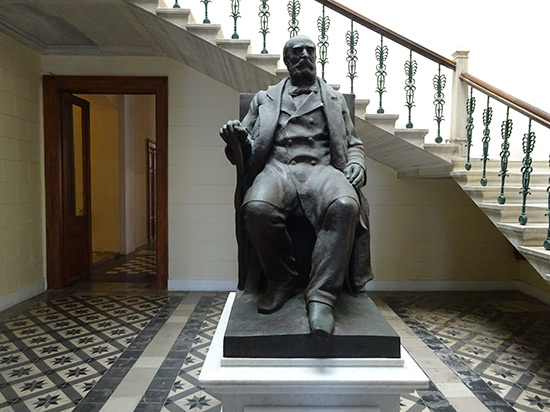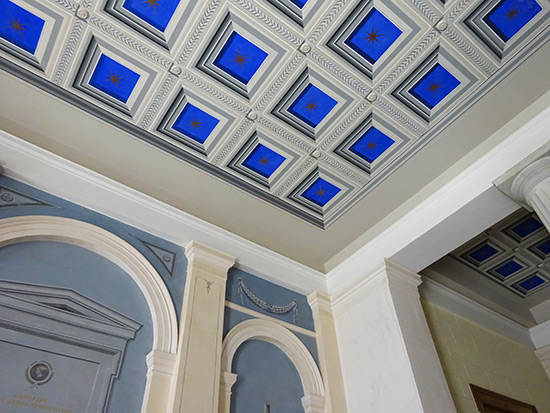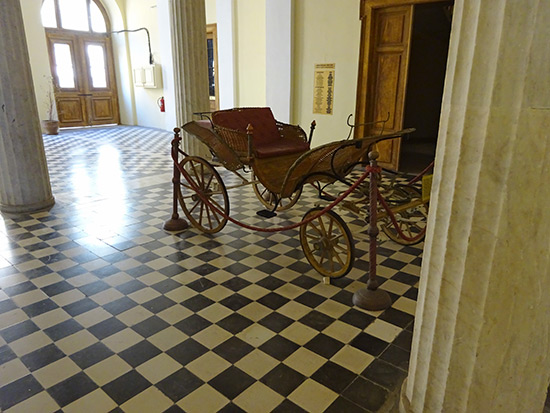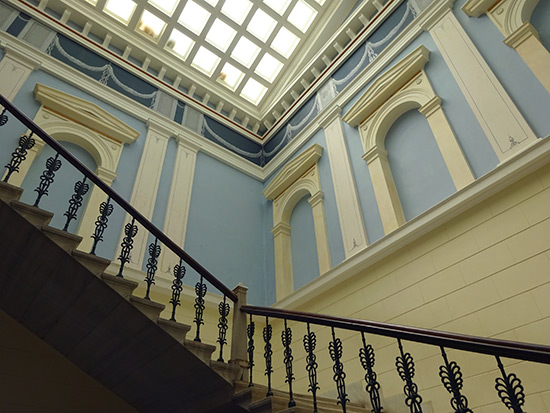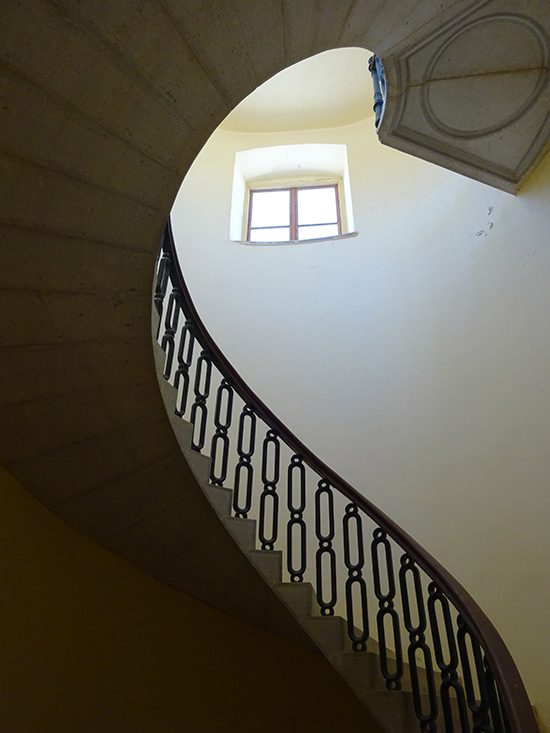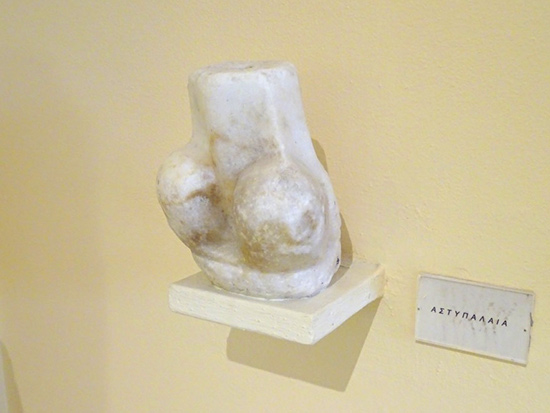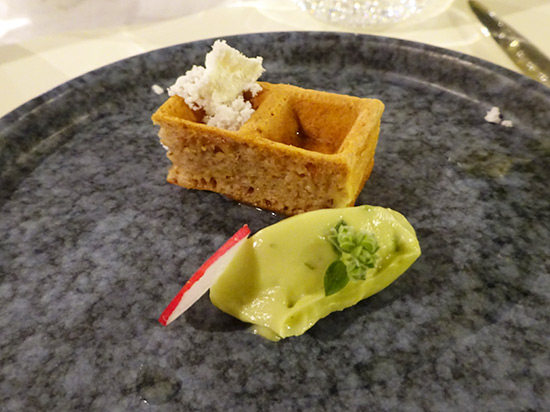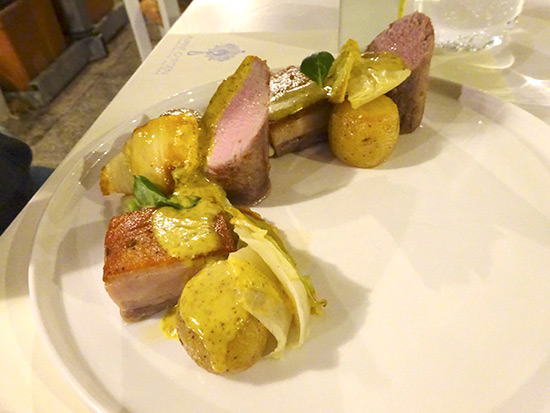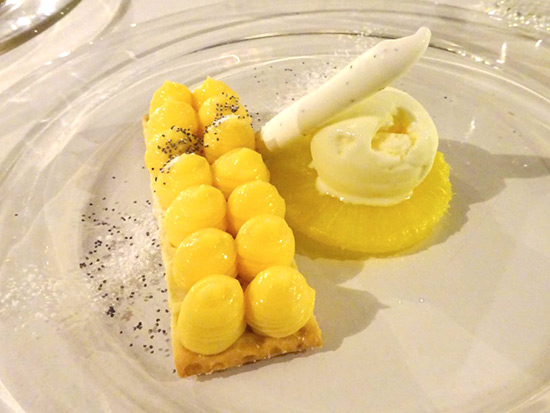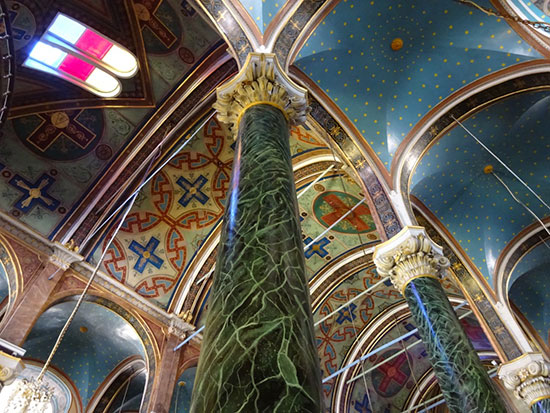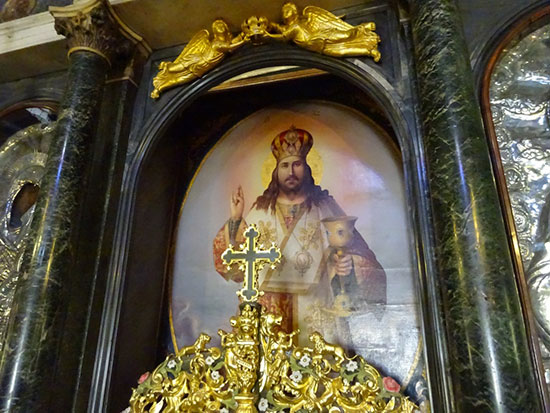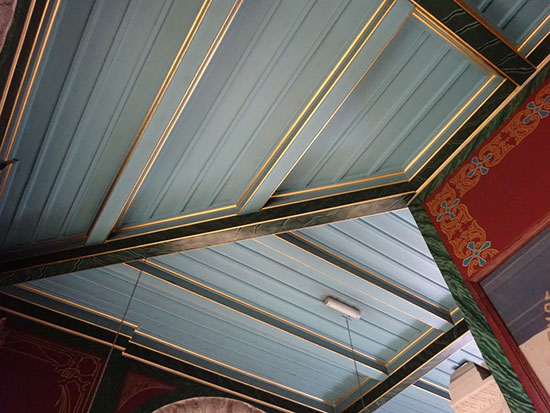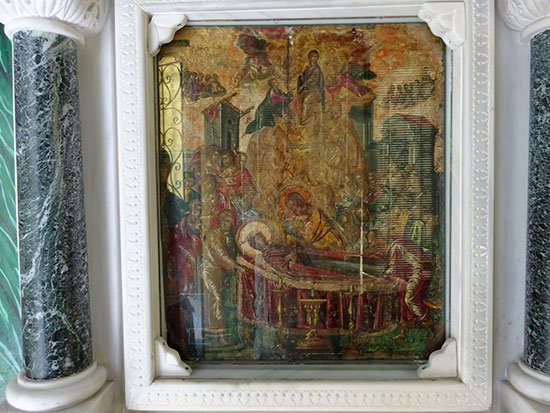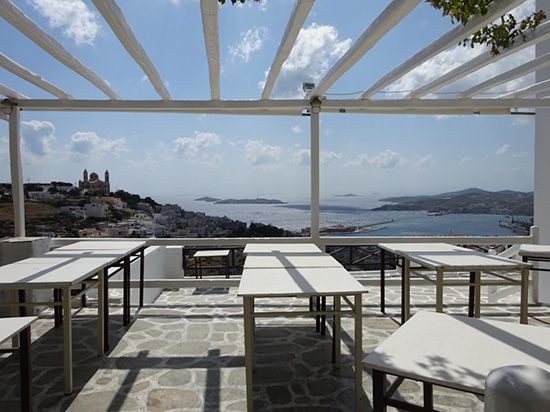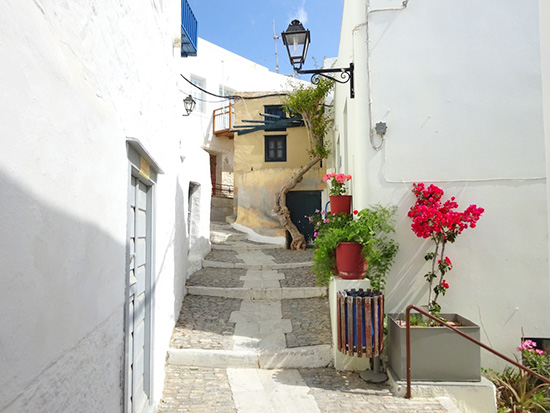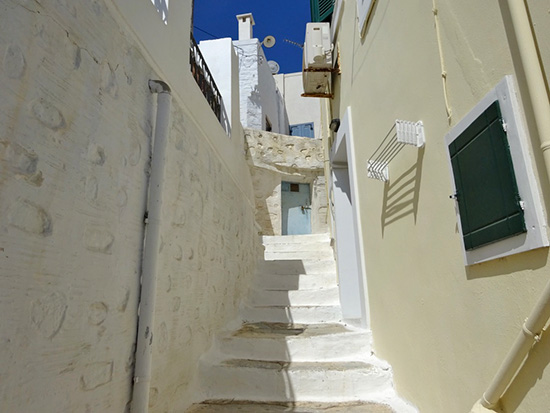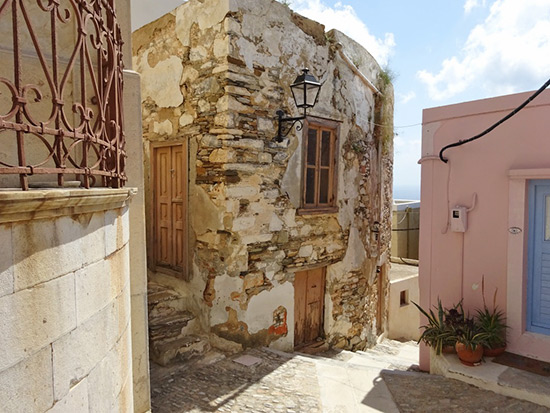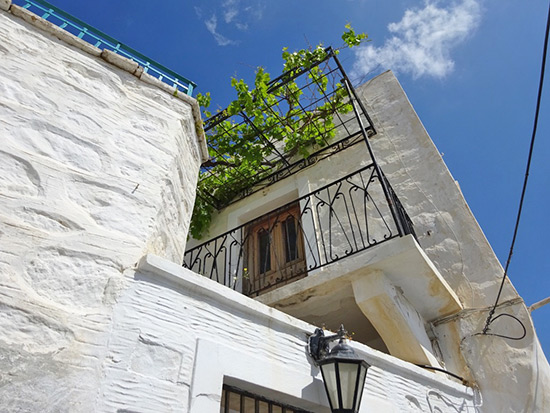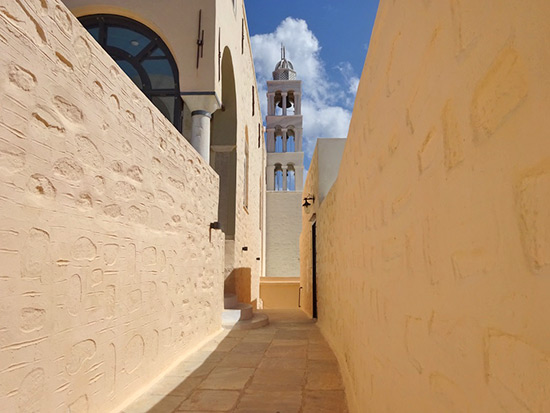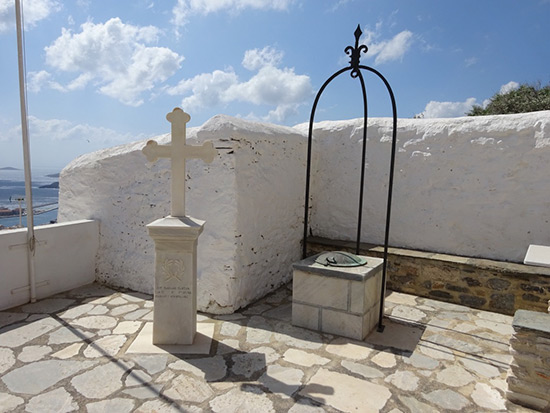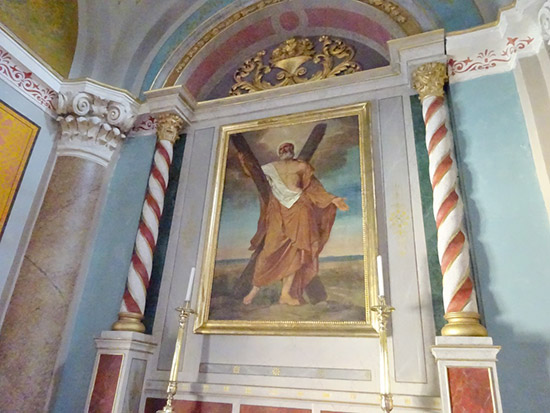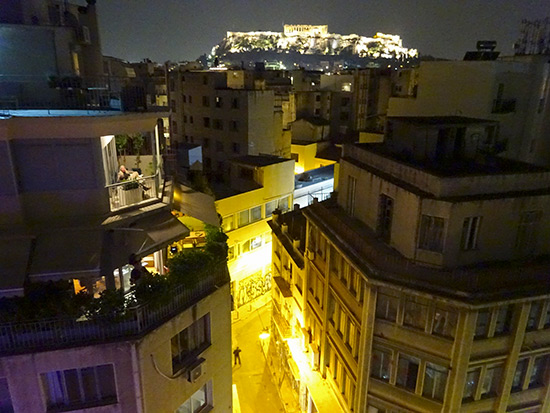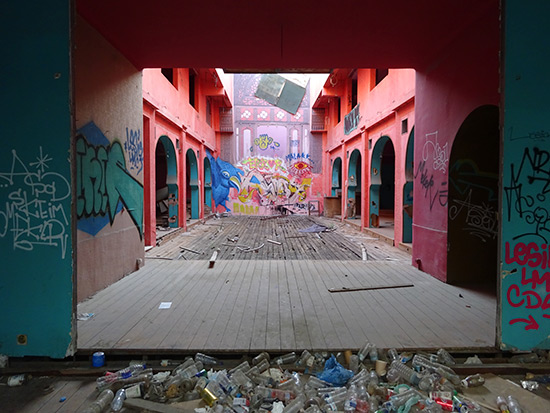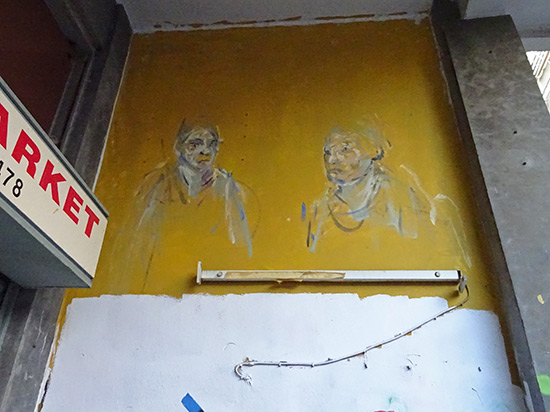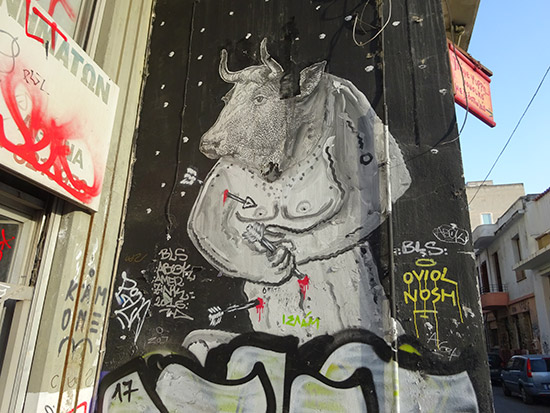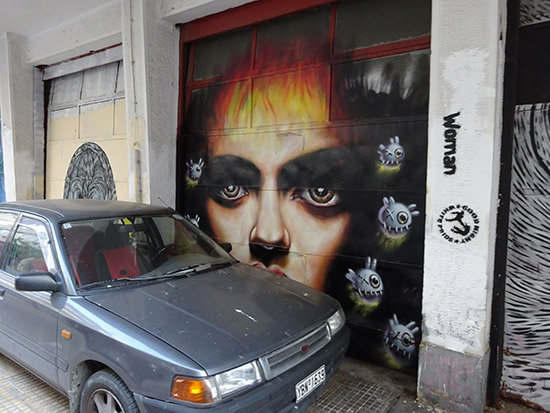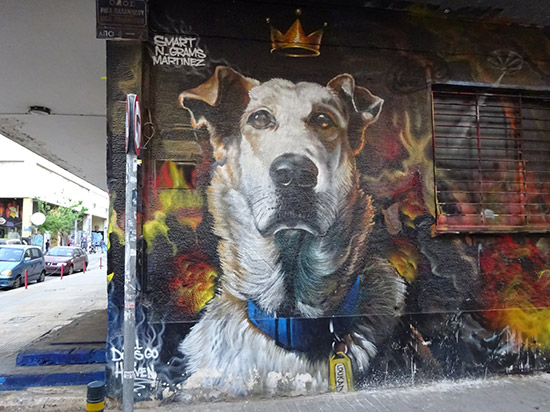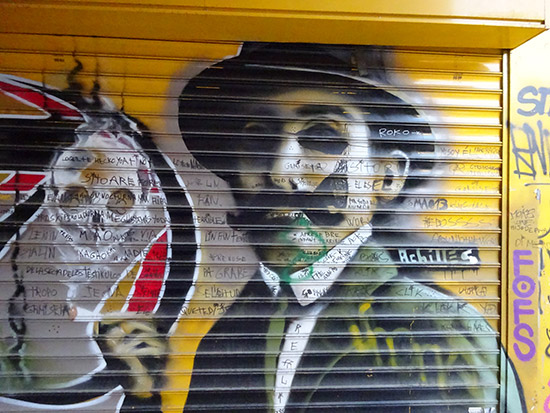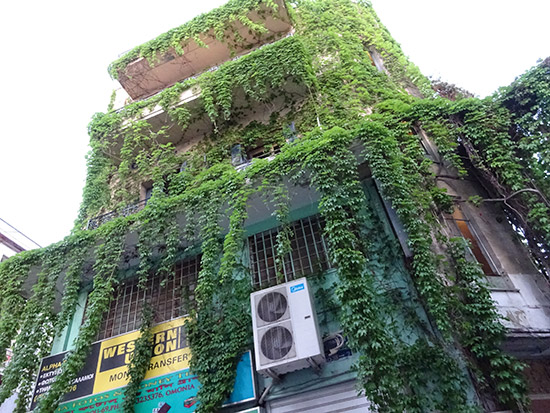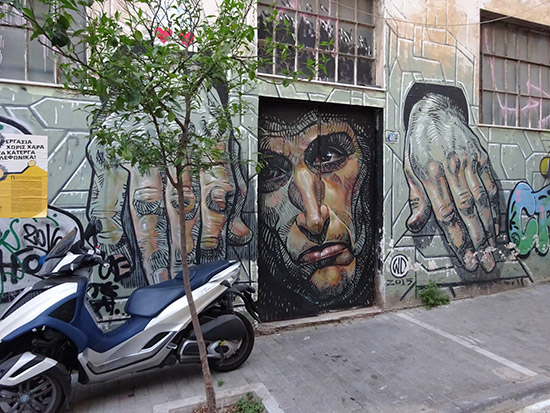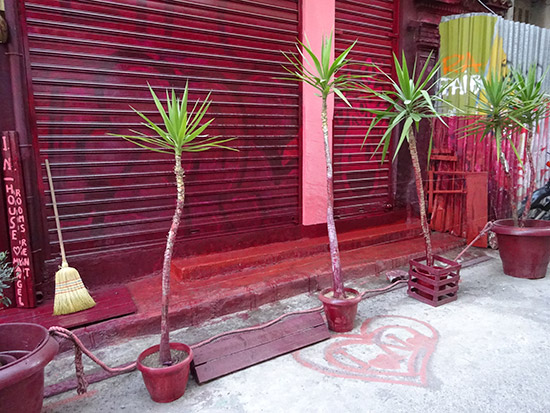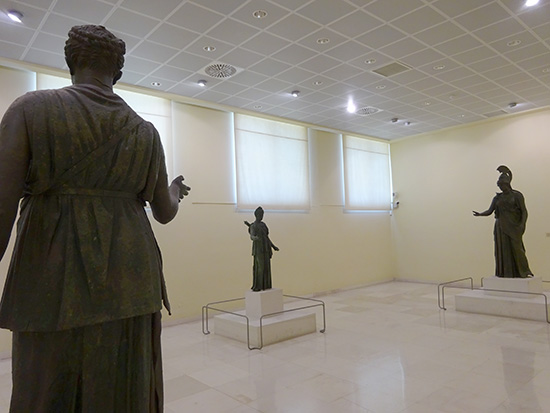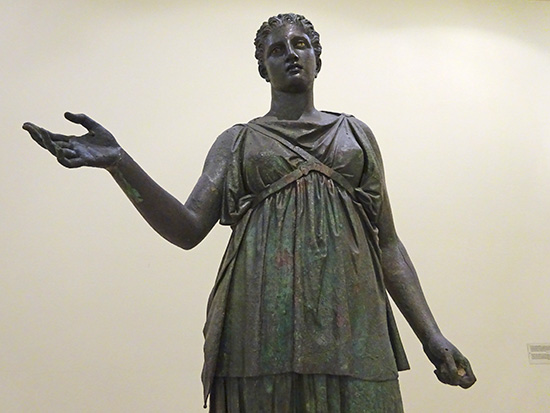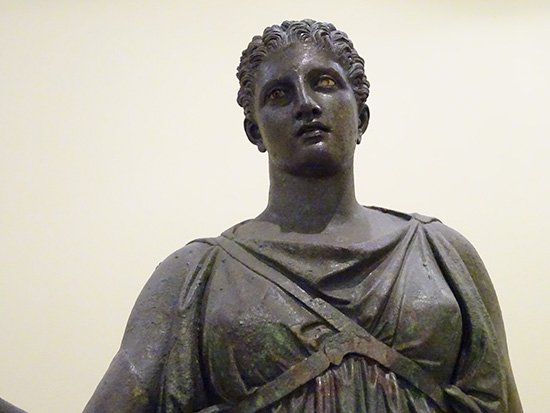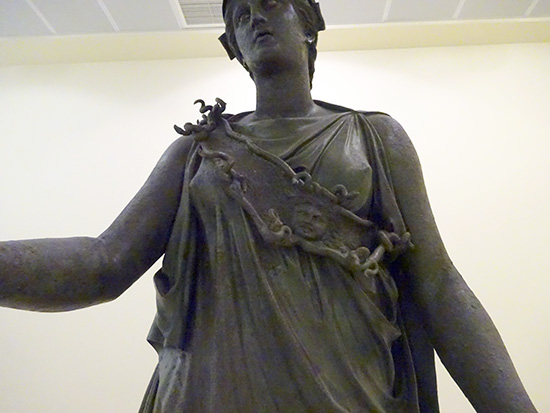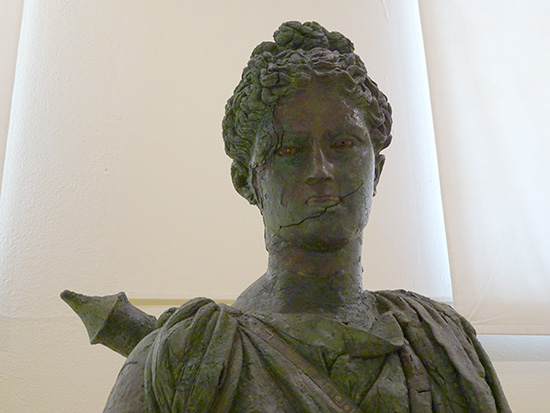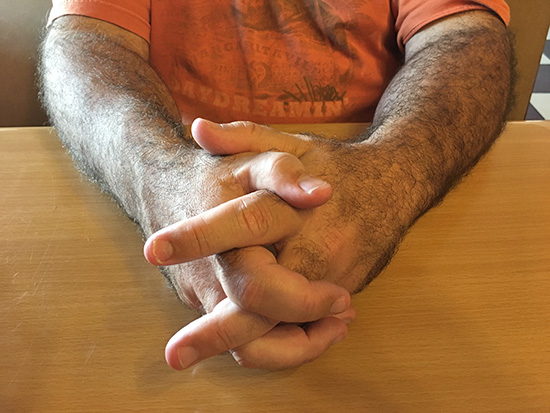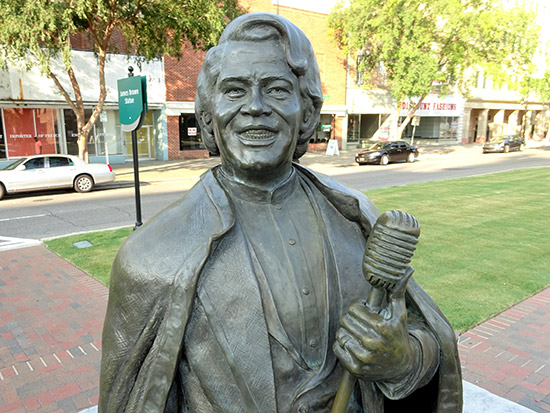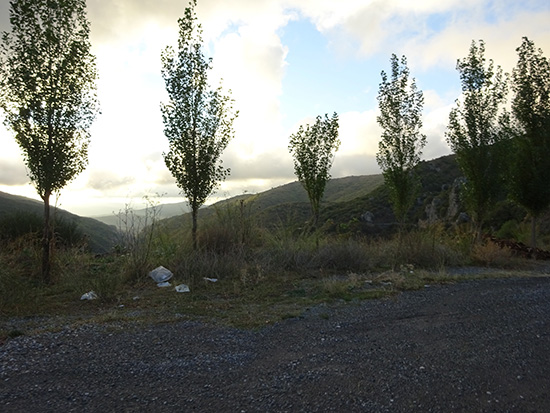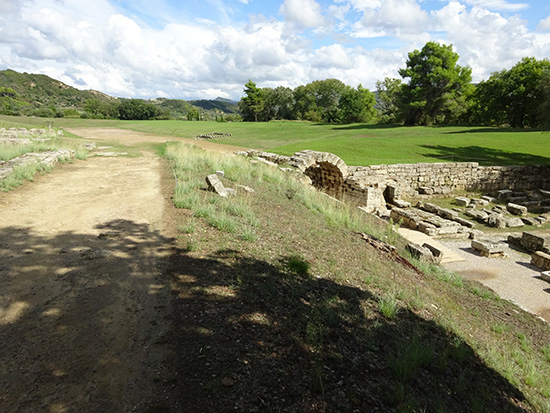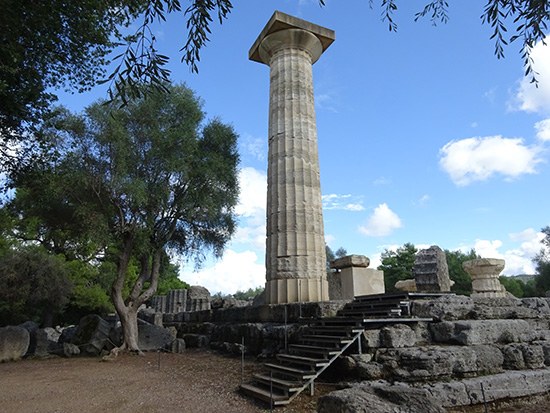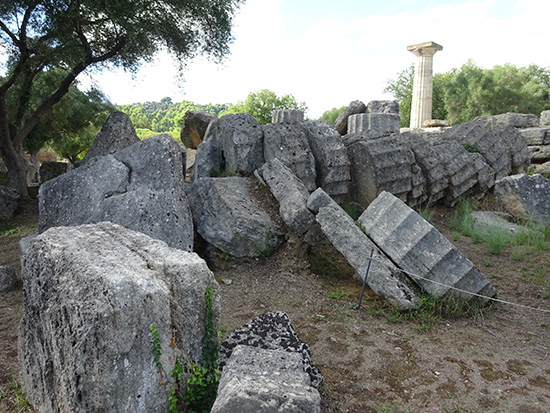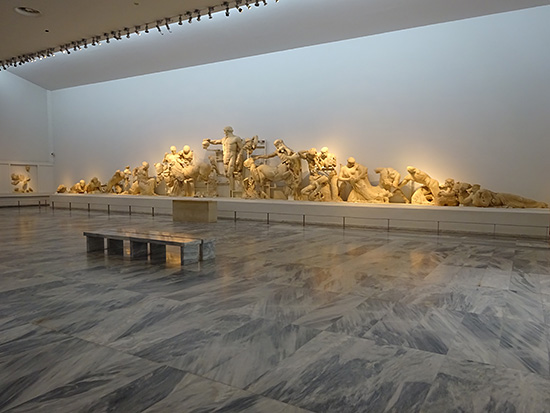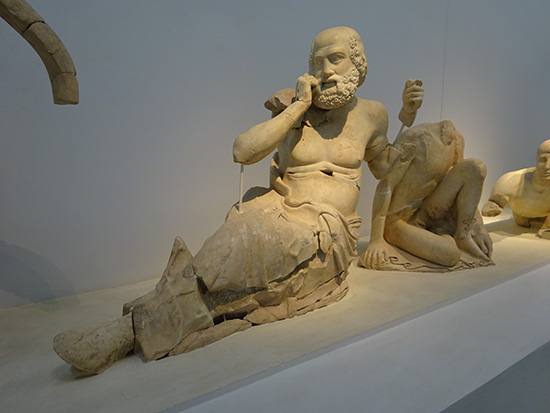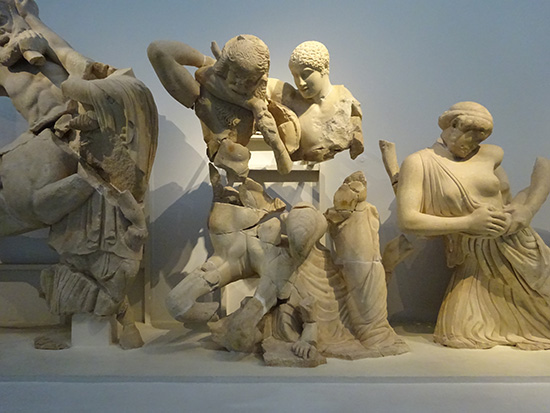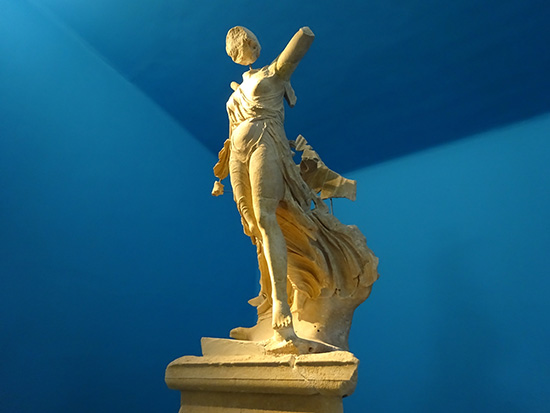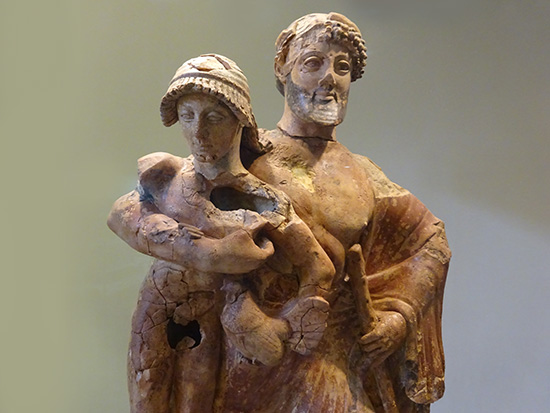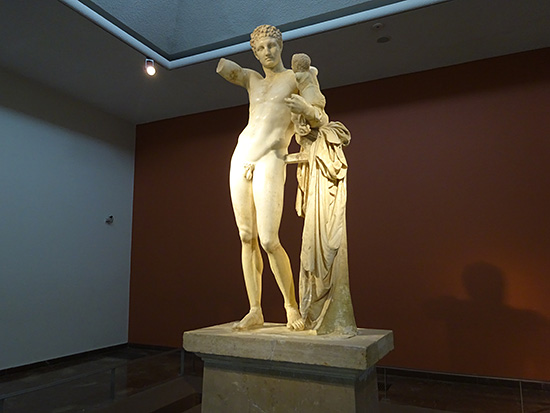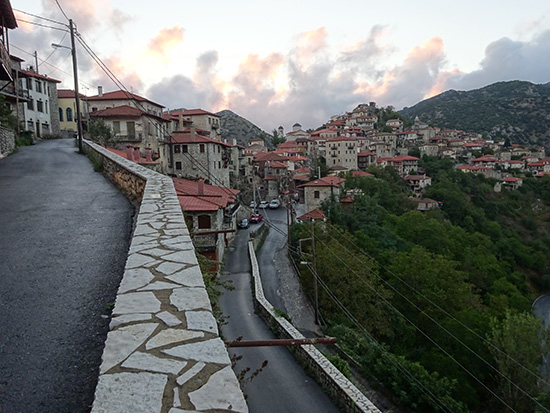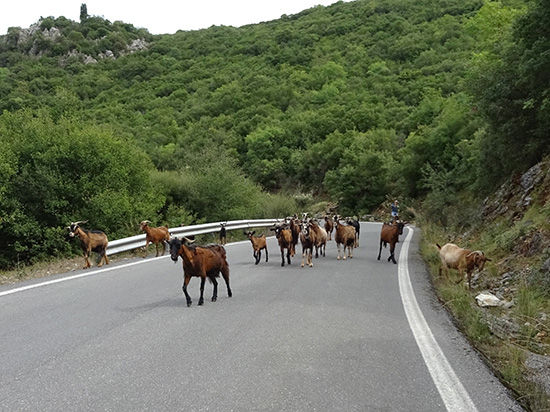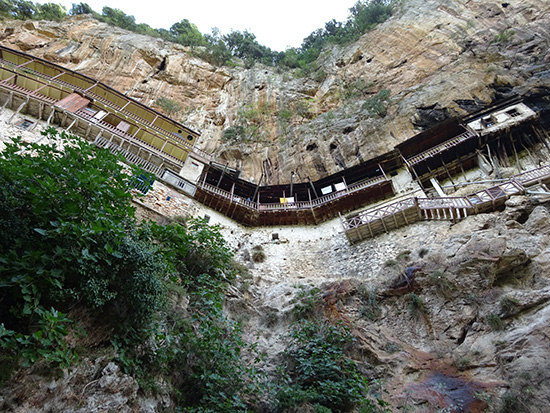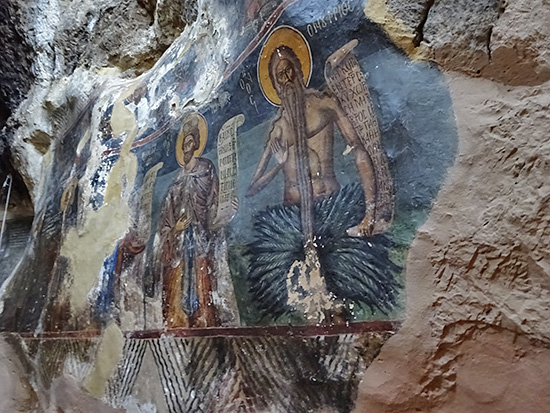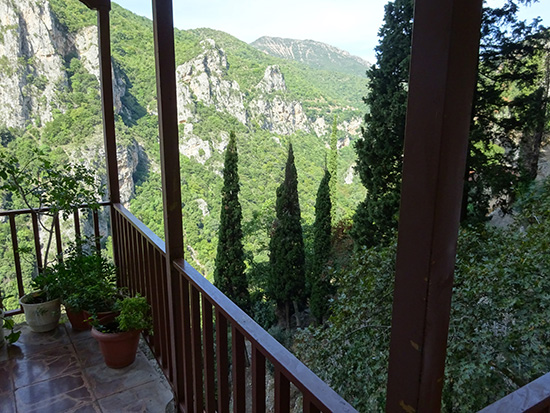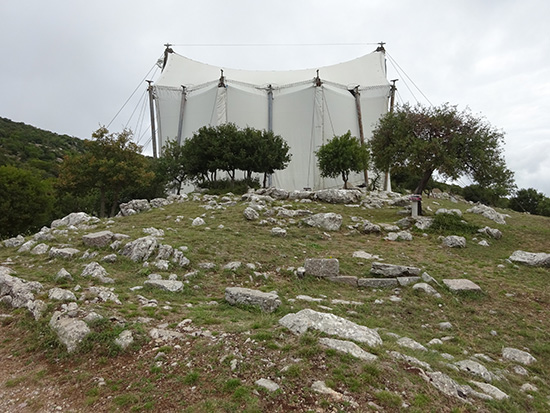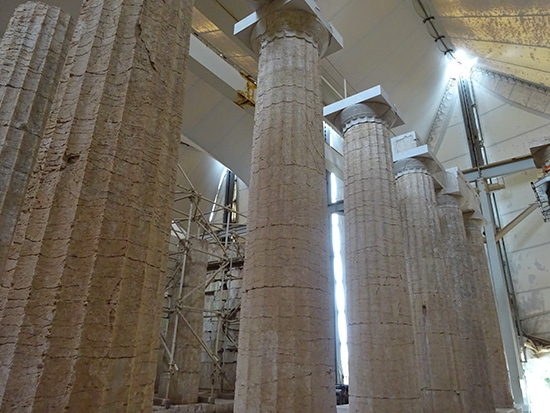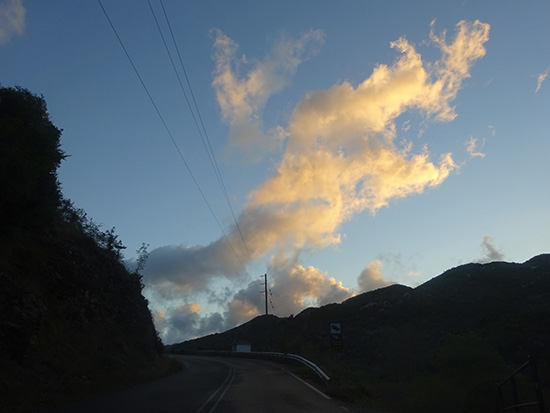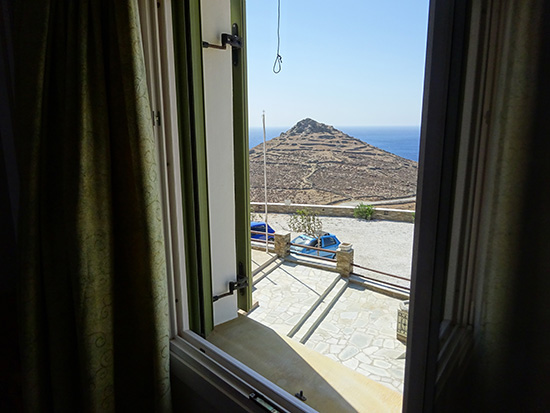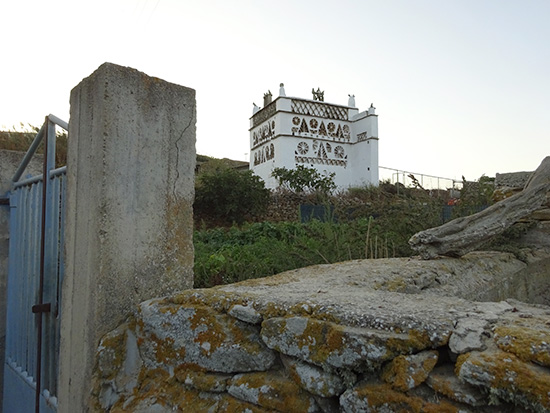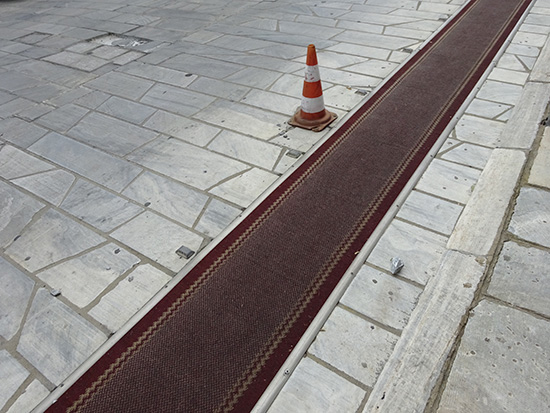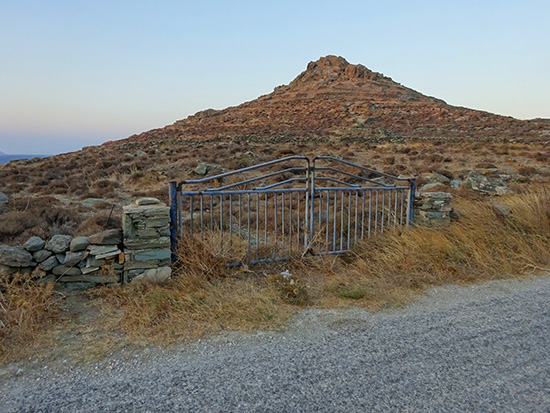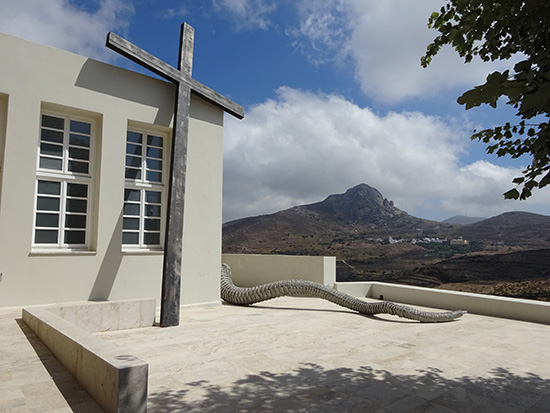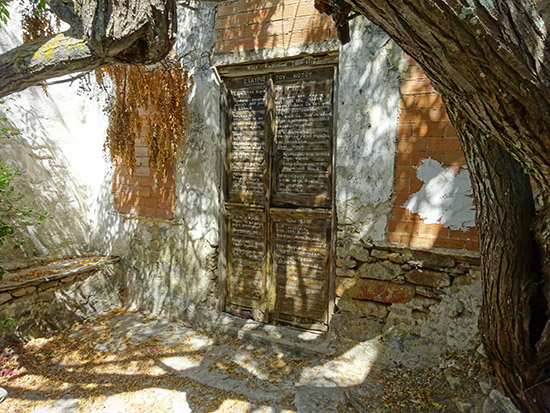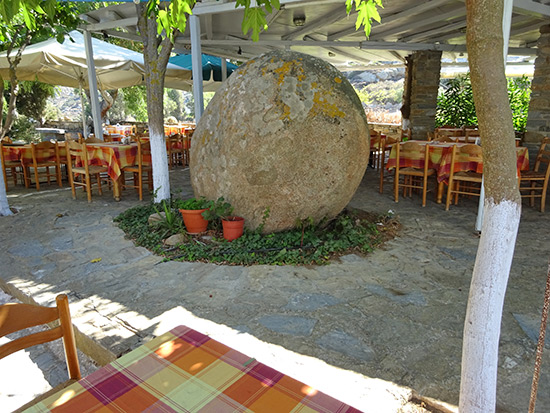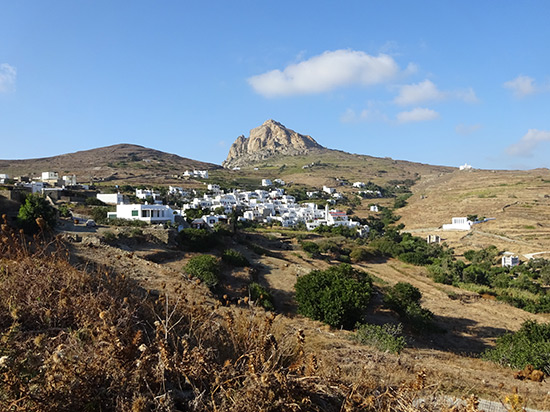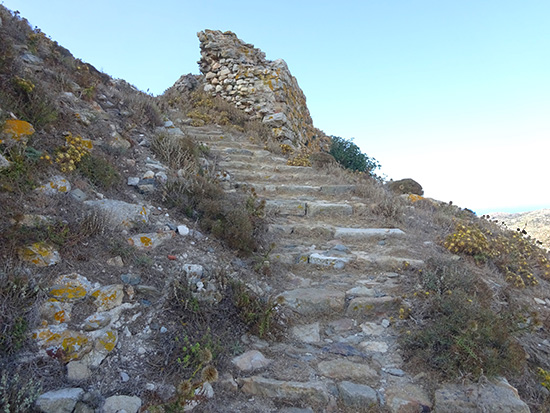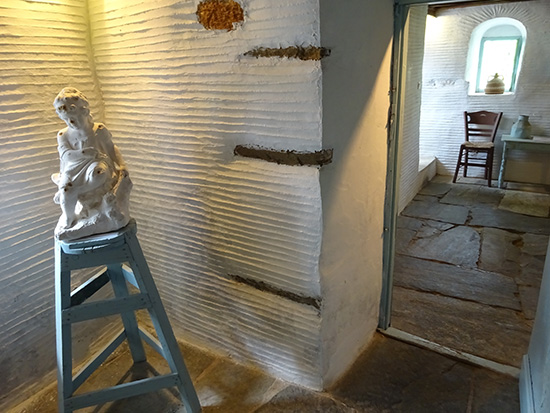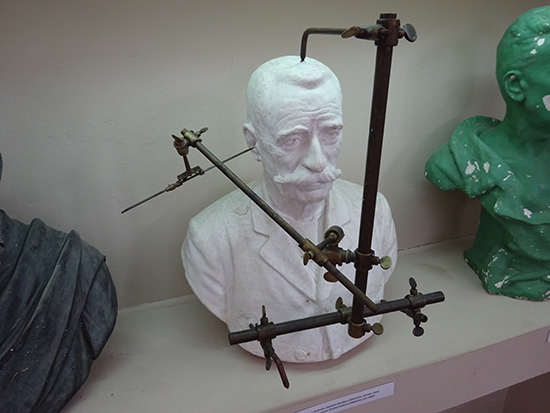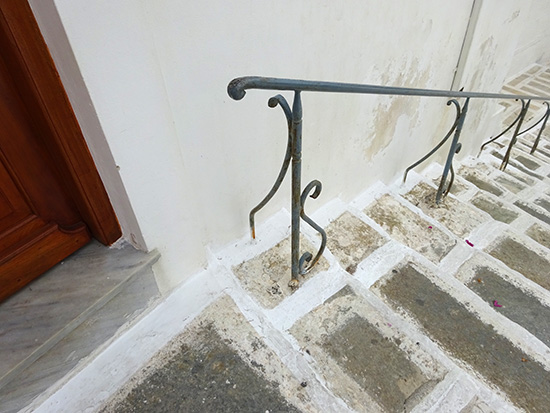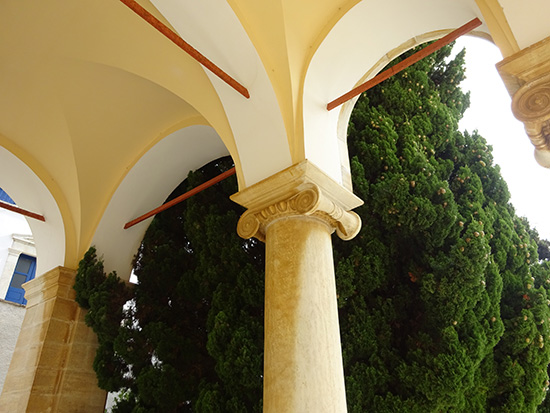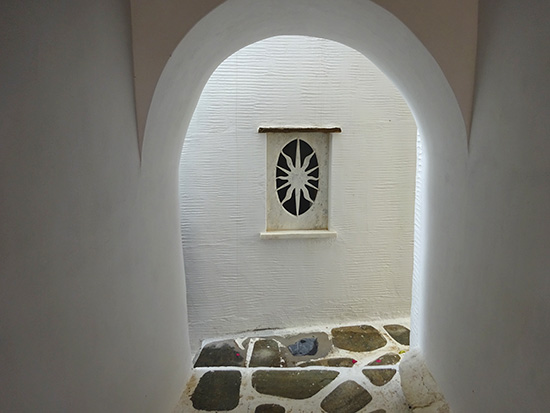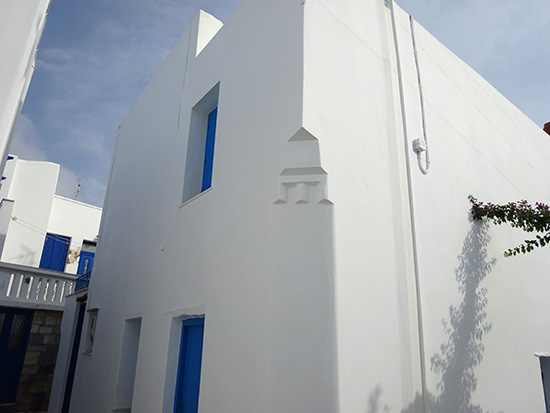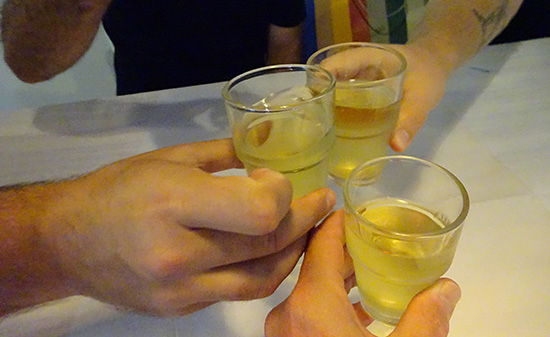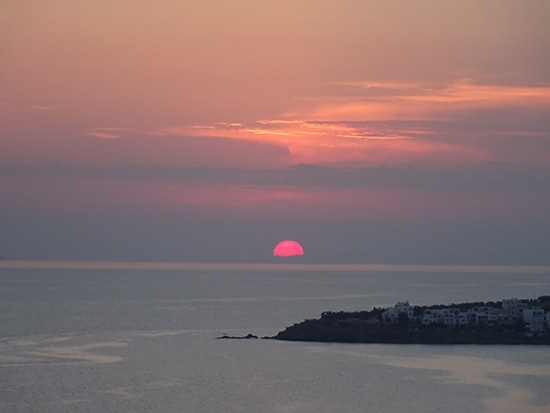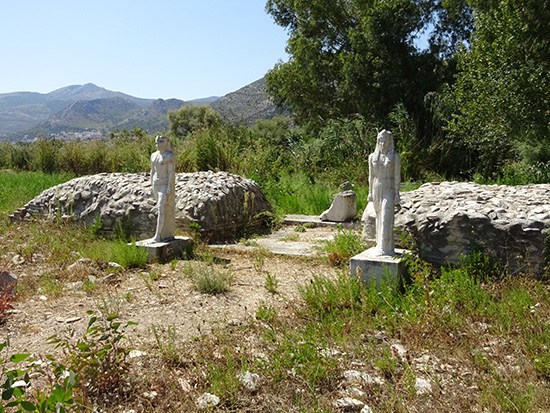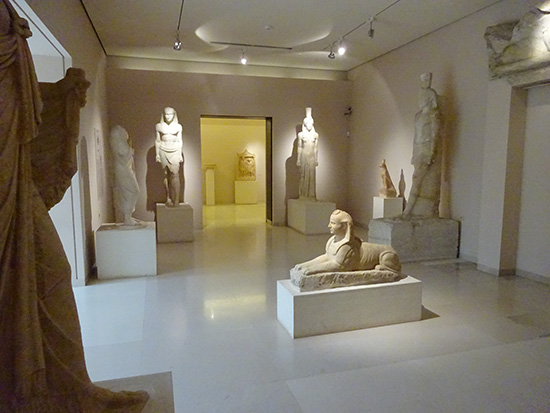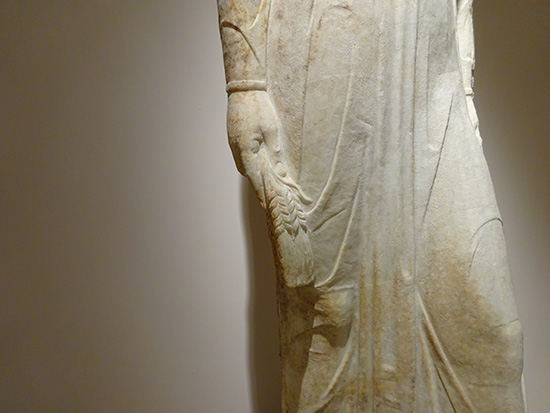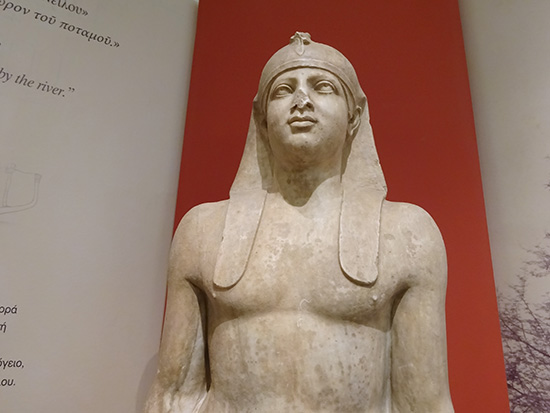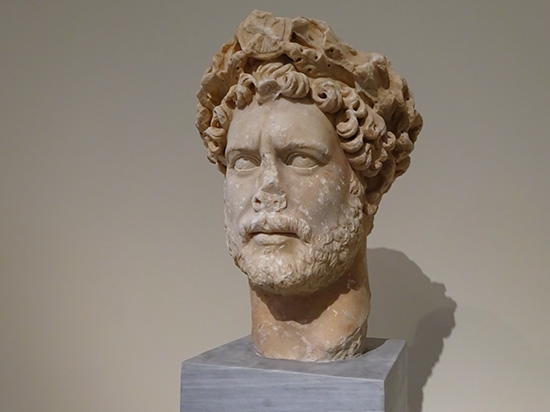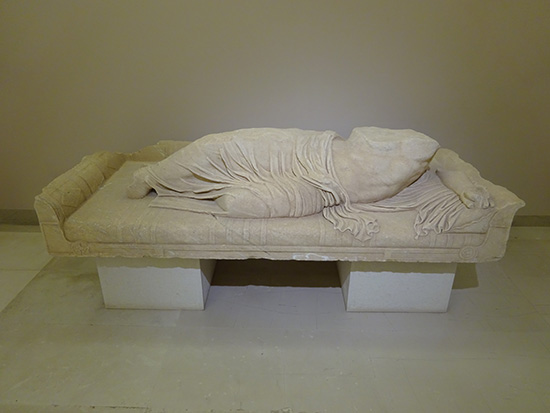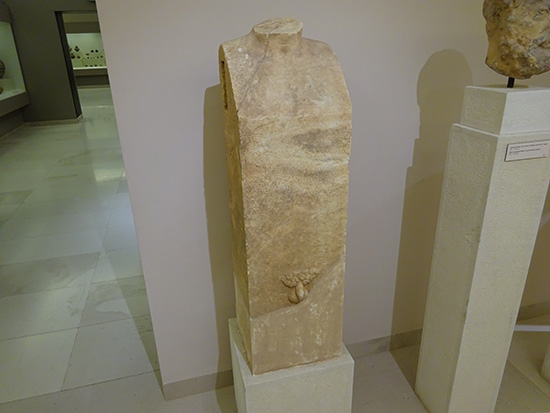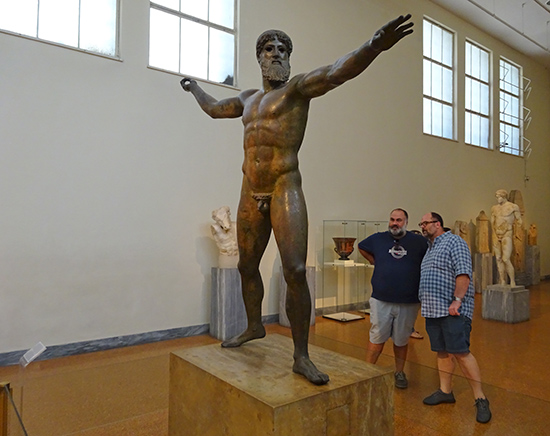
I spent the last few weeks in Greece, traveling around with Stavros and his new squeeze. Big Chrissy joined us for the first week, passing a few days in Athens, visiting the Archaeological Museum, Acropolis and Acropolis Museum–musts for new visitors, and for me so nice to revisit Papposilenus, Poseidon, Hadrian and all my other guys.
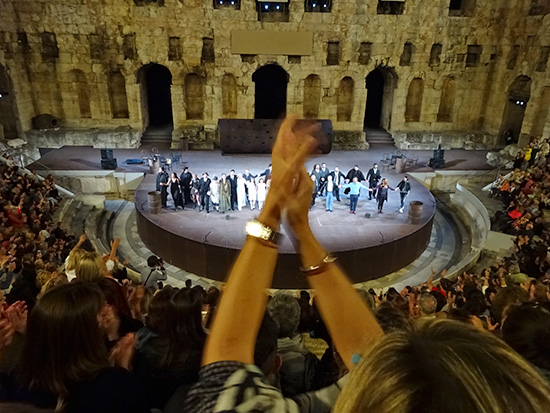
We attended a staging of Sophocles’ Oedipus Rex at the open air Odeon of Herodes Atticus, built in 161 AD on the southern slope of the Acropolis. It was a joint production of the Vakhtangov State Academic Theatre of Russia and the National Theatre of Greece, directed by Rimas Tuminas. Greek actors performed the ancient Chorus in Greek, and Russian actors the lead parts in Russian. At the center of the stage was a single rusted steel tube, a little over a person’s height in diameter, that characters hopped onto and off of, rolling upstage and back as Oedipus hollers at Tiresias and Creon and slowly figures out that he can’t escape his fate. Jocasta was played by an actress who almost comically looked like Oedipus’ grandmother, slowly hobbling across the stage in a dynamite performance.
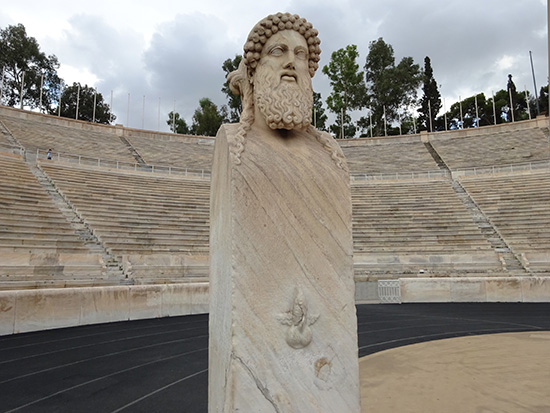
We visited the Panathenaic stadium, built around 330 BC for the Panathenaic games. It was rebuilt entirely of marble by Herodes Atticus in 144 AD, and much later, and after a complete restoration, in 1896 hosted the first modern international Olympics games. At one end of the field are two delightful herms, one of which is double-sided and double-genitaled, representing Apollo and Hermes. Herms were made to ward off bad energy, as markers, for good luck, etc… but I find their stripped down quality, just head and penis, incredibly entertaining–really, just forget about the rest of this guy.
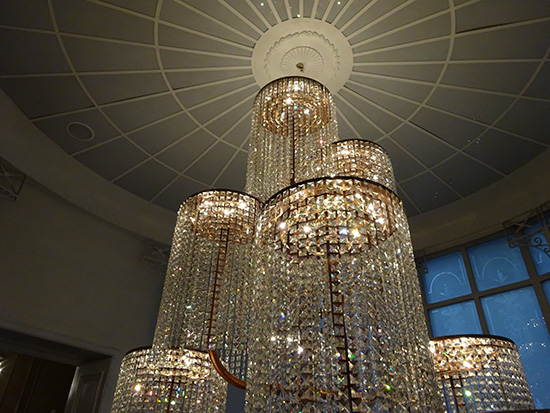
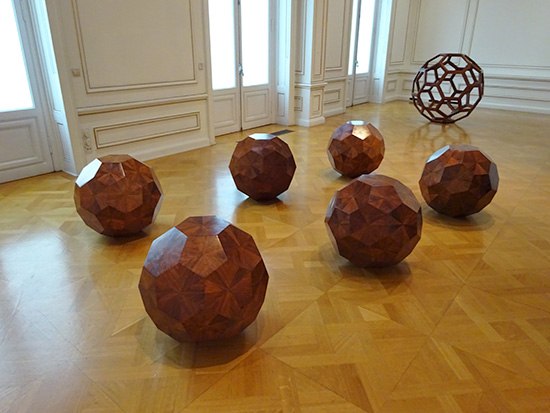
We saw a really great show of sculpture by Ai WeiWei at the Museum of Cycladic Art. Installed in the neoclassical wing of the museum were meticulously hand-crafted pieces that conceptually addressed the current refugee crisis in Greece, various humanitarian crises in China, and a clever statue made in the style of an early cycladic figure dropping a vase, referring to Ai’s destruction of neolithic pottery in his earlier work. Interspersed throughout the rest of the museum were sculptures that visually blended in with the museum’s collection, handmade shards of pottery, ground neolithic pots, etc, made to look old but referencing contemporary concerns.
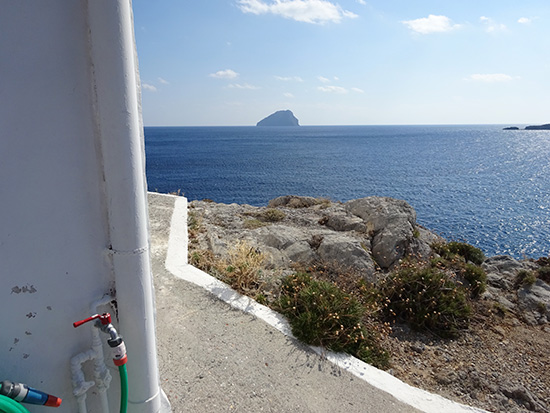
From Athens we drove through the Peloponnesos to Neapolis and hopped on the ferry for Kythira. Kythira is where Aphrodite, the goddess of love, was born. There are several versions of her origins, but my favorite has her emerging from the sea foam after Cronus chopped off his dad Uranus’ genitals and tossed them into the sea. The first thing you see on approaching the island is a shipwreck. Driving out of the port and across the barren island, it quickly becomes apparent why Aphrodite was only born here, not much to inspire procreative activity, at least on this part of Kythira. Indeed, the island’s population has dwindled from 14,500 in 1864 to about 4,000 today. In the 16th century the pirate Barbarossa invaded the island, leveled the capital, and sold the survivors into slavery. Stavros complained the whole way, “This is terrible, this tastes horrible, that’s fake.”
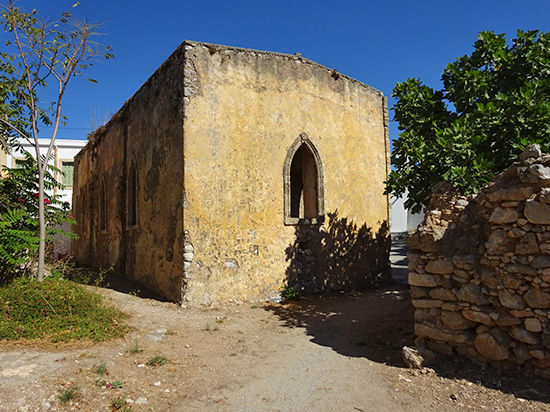
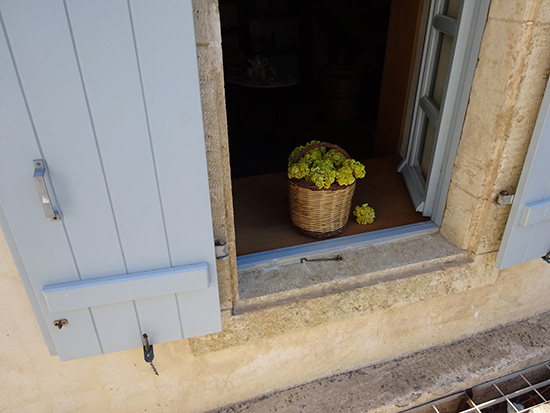
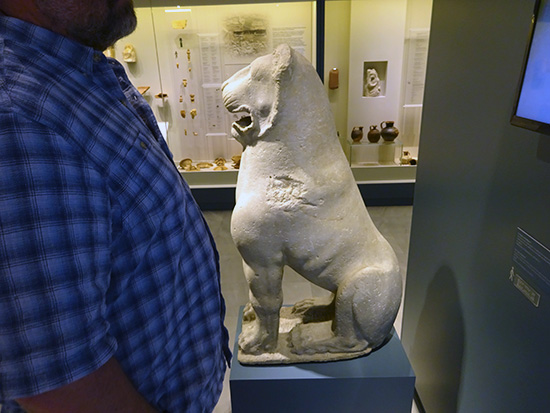
The scenic village of Mylopotomos once had 22 mills operating along a small stream with a charming waterfall. We hiked through the ruins of the mills, most almost completely consumed by the surrounding forest, to the seasonally dried-up waterfall and pesto pond below. We had lunch in the main square, under huge old sycamores, and then made our way to the ruins of a Venetian castle on the edge of town, and the cave of Agia Sofia with its 13th century byzantine frescoes. The current capital was founded by the Venetians in the 13th century and is crowned with a picturesque castle.
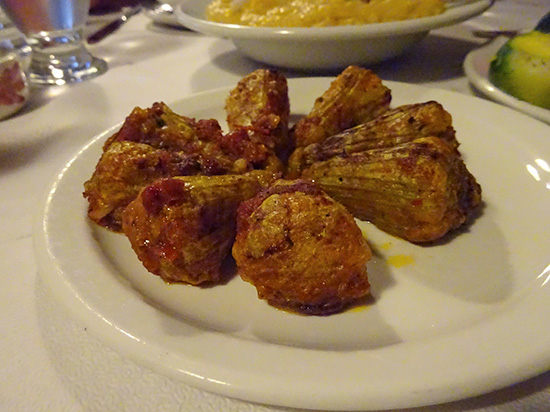
We had a fabulous dinner at Taverna Filio in Kalamos, the last customers on their last open night of the season. We ordered stuffed fried zucchini flowers, fava (puréed split peas), horta (stewed greens), lamb and potatoes, and baked eggplant, each dish so flavorful. We also had tiganopsomo, a deep fried flat bread served almost like a pizza, with toppings of cheese and tomatoes. They grow and grind their own wheat for their breads, which are proudly brought to the table fresh from the oven. The house wines are crisp and refreshing. The service is friendly and enthusiastic. All dishes are made with locally grown and sourced produce and meats.
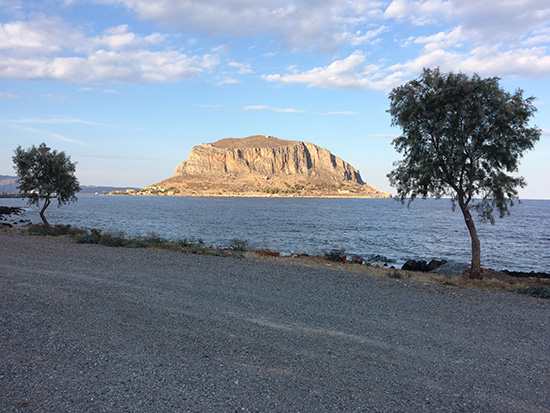
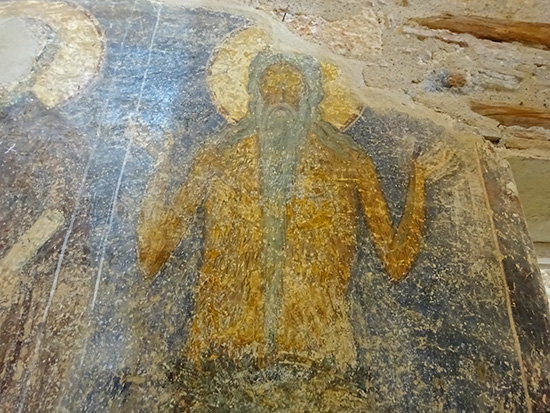
The next day we hopped on the ferry back to Neapolis and drove to Monemvasia, a perfectly preserved byzantine gem of a city built into the side of a solid sheer rock of an island. This was my third time to visit, and my first time to stay within the castle walls. Our hotel was an outrageously fabulous restored centuries-old house, with a terrace overlooking the sea and rooftops and domes of the town. No cars are allowed within the castle walls, so you hear only the occasional donkey clomp-clomping by. It really feels like stepping back in time.
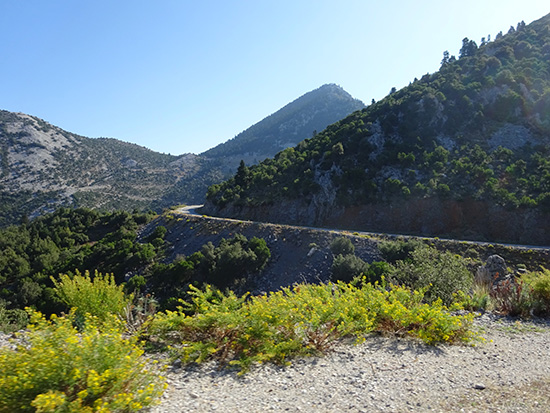
After dropping Chrissy off at the airport, Stavros and I headed to Evia, about an hour and a half drive northeast of Athens, a large island that hugs about half of the mainland’s east coast, separated from it by a narrow channel. Our first stop was Halkida (Chalcis), for a quick walk along the channel waterfront. Because of the length of the island, its proximity to the mainland, and the different flows coming into the channel from north and south, an effect called “crazy water” can be observed. Every six hours strong tidal currents reverse direction, creating strong flows of water in opposite directions. Aristotle spent his last year in Halkida and was among the first to speculate correctly about the cause of the tidal shift.
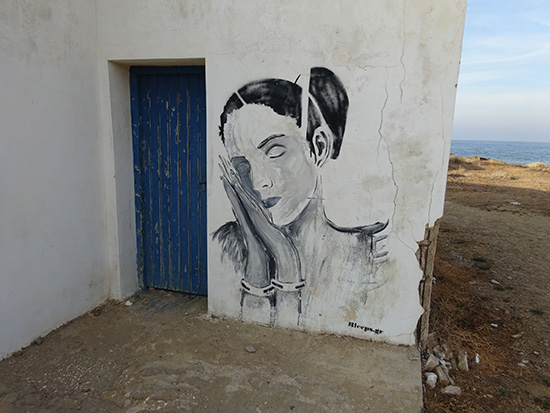
After a really nice lunch on the waterfront near Kymi, we hopped onto the ferry for Skyros island. Skyros is another of those islands not on the map for a lot of foreign travelers. Stavros and I reserved a house through AirBnB, in the village of Molos, in the shadow of the main town and close to the beach. Our hostess was the most knowledgable Skyrophile who has ever lived, having written books on the cuisine, ceramics and history of the island, the books casually scattered among our room’s furnishings. On Sunday morning, driving into town with Stavros, hours after she and her husband had taken off for church in town, we saw her sauntering back to the house, in her tight dress and high heels and perfect conch of a hairdo. To get to where she was from town, she had to have walked down through the winding streets of town–essentially down a mountain–and then several miles to where we saw her. In high heels. Not a hair out of place. I was in awe. She’s like someone Melina Mercouri would have portrayed.
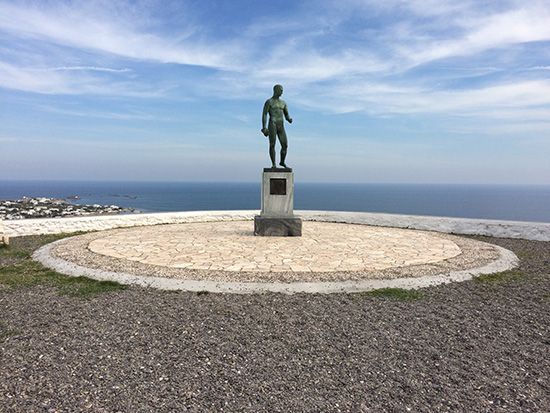
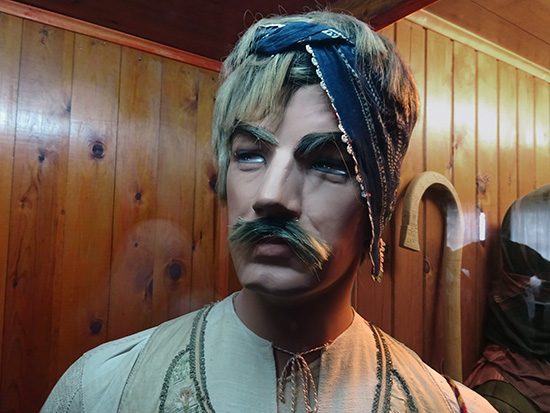
The main town is perched on the slopes of a steep mountain overlooking the sea. Near the charming folk art museum, there’s a nude statue dedicated to eternal poetry and Rupert Brooke, the english poet known for his beauty and romantic war poems, serenely perched on a theatrical stage set of sea and sky. Rupert was connected to Skyros only through his death. While in the British Royal Navy, he developed sepsis from an infected mosquito bite and died in a French hospital ship moored in a bay off the island. He was buried in an olive grove in the otherwise rocky and barren southern part of the island.
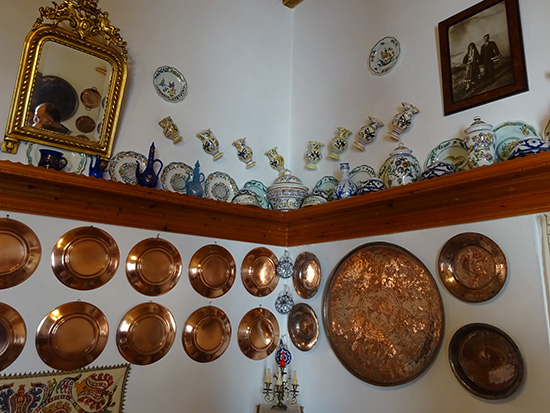

Hiking up through town to the castle we were accosted by several sweet middle-aged women, Athenians closing up their houses for the season, one of whom invited us into her home. Eager to show us a traditional Skyrian home, she proudly pointed out her many ceramics and freshly polished copper wares, and served us mastiha, a liqueur flavored with resin of the mastic tree.
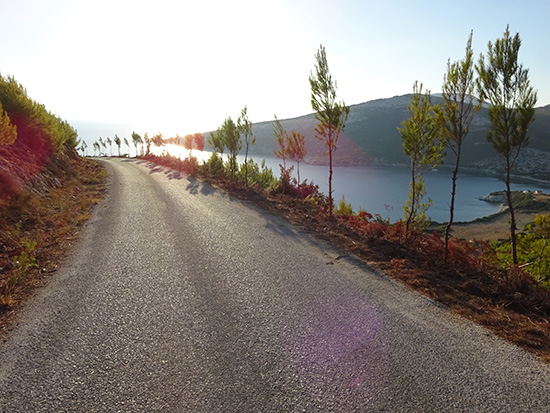
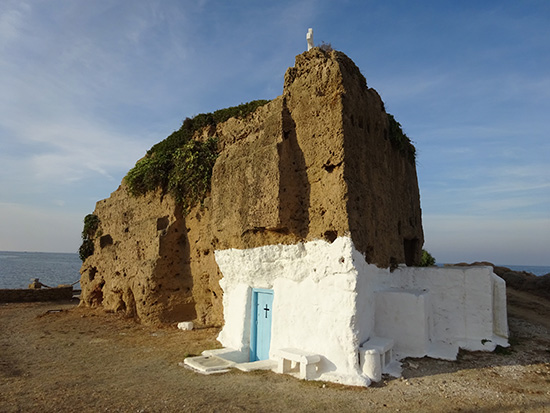
The island is shaped like a figure 8, with the northern part densely green and lush. There’s a neolithic settlement on the northern tip and several other ruins scattered here and there along the drive, reflecting the various architectural styles of Roman, Venetian, Macedonian and Byzantine civilizations.
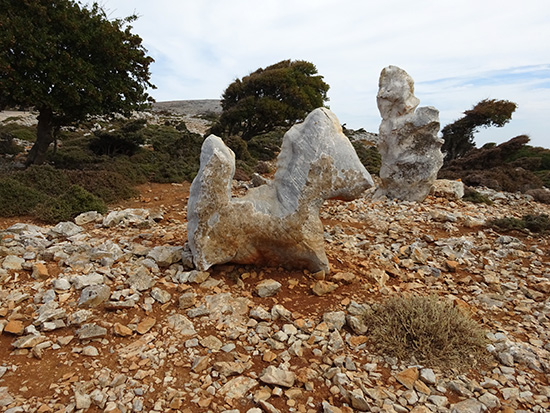
The southern part of the island is very rocky and bare. Near the most southern point, along the main road, are rock formations–either naturally occurring or by human hand, not sure, but they’re very striking in the landscape–forming a (seemingly) natural abstract sculpture garden, with the occasional passing goat or wild pony.
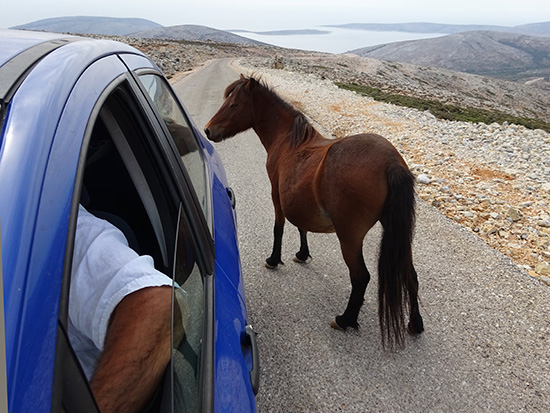
There’s a pony that’s native to Skyros, brought to the island by Athenian settlers sometime between the 8th and 5th centuries BC, one of the rarest horse breeds in the world. The ponies may have been used by Alexander in his conquests, and might be the horses depicted on the Parthenon frieze. The ponies are semi-wild in the southern part of the island, but many have been caught and tamed for use by farmers, ranging across the island until they are needed for the grain harvest.
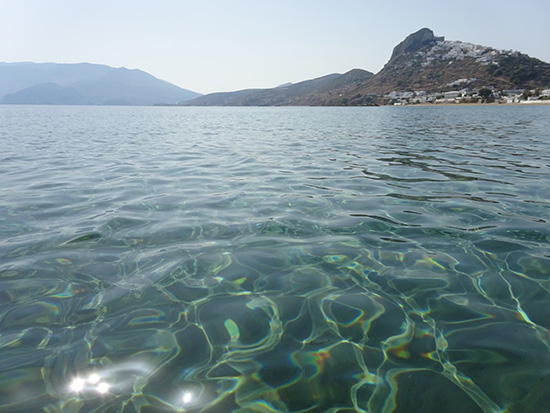
Driving back to Athens, we took the longer mountainous route through the heart of Evia, a beautifully scenic drive twisting through dense forests, steep gorges, and sweet little hilltop villages. I’m back in San Francisco now, where Autumn is in full swing, a little discombobulated by how swiftly my time in Greece passed, missing those placid Greek waters, souvlaki pitas, and my dear friends…
Like this:
Like Loading...
